







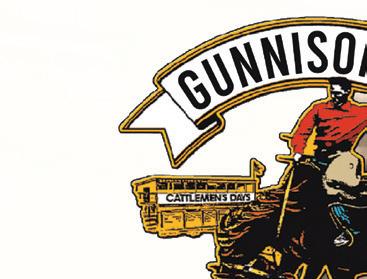
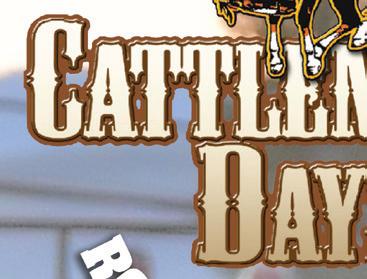


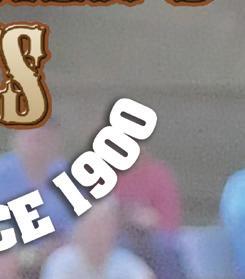




FRIDAY, JUNE 27
9:00 AM 4-H Horse Show
SATURDAY, JUNE 28
8:00 AM District 4-H Show
SUNDAY, JUNE 29
8:00 AM District 4-H Show
WEDNESDAY, JULY 2
Evening Carnival
THURSDAY, JULY 3
4:30 PM Mutton Busting Mini Broncs
Evening Carnival FRIDAY, JULY 4
Evening Carnival
SATURDAY, JULY 5
2:00 PM Ranch Rodeo
Evening Carnival
SUNDAY, JULY 6
Open Horse Show
MONDAY, JULY 7









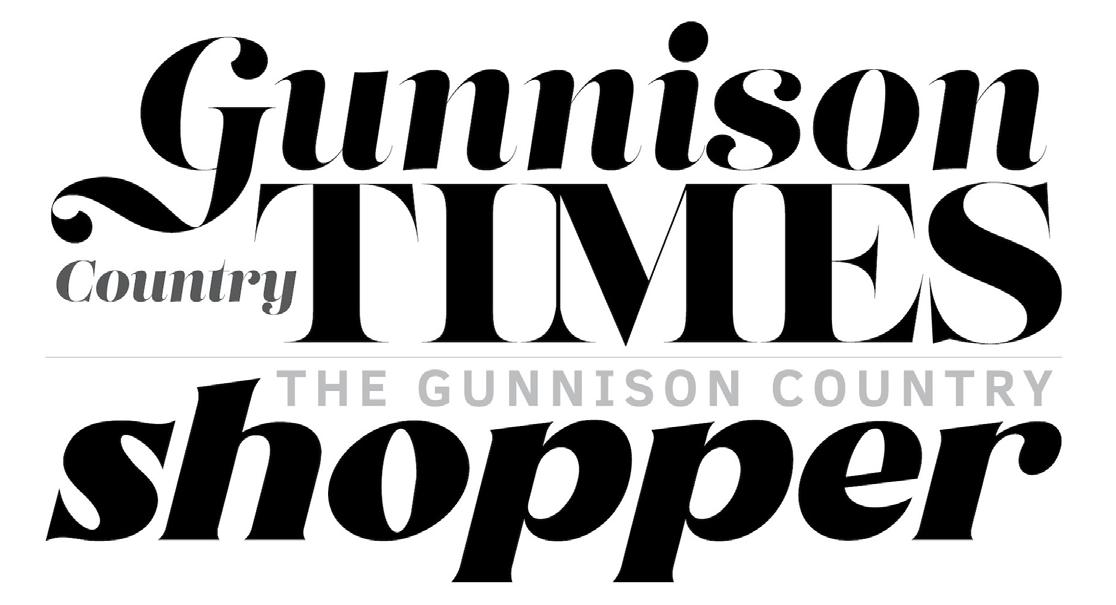
9:00 AM 4-H Dog Show


Details, Full Schedule Updates, & Additional Info at: cattlemensdays.com



Tickets available at: cattlemensdays.ticketspice.com/ cattlemens-days-2025 OR SCAN BELOW
8:30 AM General 4-H Judging and Interviews
7:00 PM Cowboy Poetry in the Hospitality Tent
6:30 PM General Project Review - Awards Trudy Vader’s Working Ranch Competition
TUESDAY, JULY 8
Watershed Team Roping & Barrel Racing
WEDNESDAY, JULY 9
8:30 AM 4-H Rabbit & Poultry Show Golf Tournament
THURSDAY, JULY 10
9:00 AM PRCA Rodeo Slack
10:00 AM 4-H & FFA Swine Show
2:30 PM 4-H & FFA Sheep Show
6:45 PM PRCA Rodeo | Golden Circle of Champions Cowboys & Kids Against Cancer | WEAR BLACK & GOLD
9:30 PM Concert at 5B’s BBQ - with live music from Ken Stonecipher & the Wooden Nickle Band FRIDAY, JULY 11
8:30 AM 4-H & FFA Goat Show

10:30 AM 4-H & FFA Cattle Show
1:30 PM 4-H & FFA Round Robin Showmanship
6:45 PM PRCA Rodeo | Patriot Night | WEAR RED WHITE & BLUE Concert at the Ice Rink
SATURDAY, JULY 12
10:00 AM Cattlemen’s Days Parade
12:30 PM 4-H Junior Livestock Buyer’s BBQ
1:30 PM 4-H Junior Livestock Auction


6:45 PM PRCA Rodeo | Gunnison Ranchland Conservation Legacy
SUNDAY, JULY 13 9:00 AM Cowboy Church at the Fairgrounds





Welcome to the 2025 Cattlemen’s Days Rodeo, the longest continuous rodeo in Colorado and the fourth longest in the nation. From rodeo in the streets in 1900 to the present fairgrounds, we are proud to put on the best showcase of the rich Western history and traditions that made the Gunnison Valley what it is today. From our dynamic 4H programs, horse shows, entertainment and parade all the way through the best PRCA rodeo around, Gunnison is the place to be in July!
Nationally recognized as a top 5 mediumsized rodeo, Cattlemen’s Days Rodeo brings in the very best cowboys and cowgirls each and every year. Our award-winning announcer, stock contractor, comedy acts and others, work together to bring a show you
do not want to miss. We are proud to present three nights of rodeo celebrating The Golden Circle of Champions on Thursday, our Patriot Night Rodeo on Friday, and the Ranchland Conservation Legacy Rodeo on Saturday.
We couldn’t do this without our amazing rodeo committee, countless volunteers, and a very supportive community. These volunteers work tirelessly to provide the best experience for all.
I encourage you to make plans to be in Gunnison in July to be a part of our 125th Cattlemen’s Days Celebration!
(Brad Tutor is president of the Cattlemen’s Days Committee.)




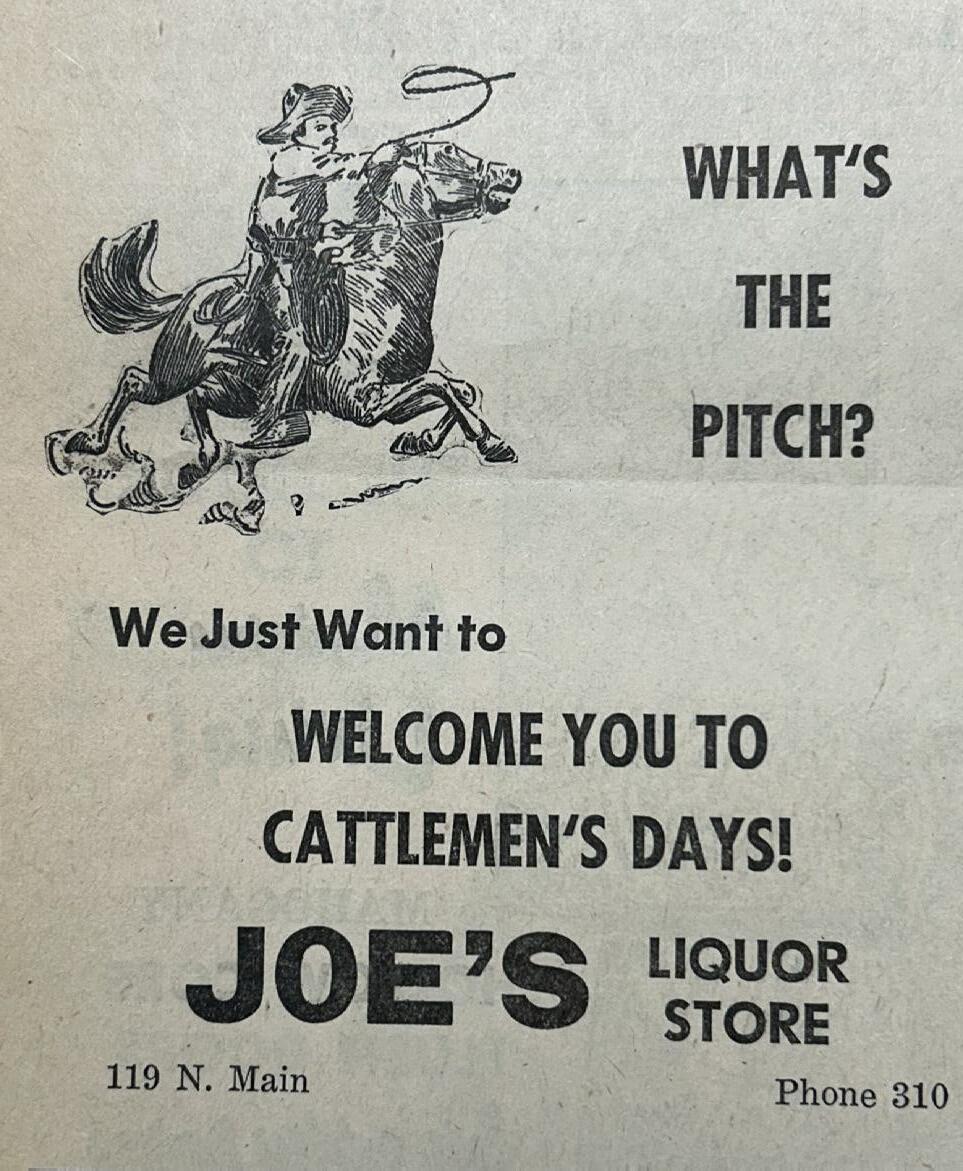


By David Primus
For thousands of years, the Gunnison Country was inhabited by Indigenous people, most recently by the Uncompahgre Utes. The treaty of 1868 allocated 15 million acres in western Colorado to the Utes and established two Indian agencies. The Los Pinos Agency was located in Cochetopa Park, 25 miles south of today's Gunnison; the White River Agency was in northwest Colorado near today's Meeker. Indian agents and other staff were hired to manage and
operate the agencies. One of the first challenges for Charles Adams, the Los Pinos agent, was to provide food for well over 1,000 Utes. He began purchasing large quantities of food from Otto Mears, a storekeeper in Saguache. Seeing a market for his goods, Mears improved the rough road to the agency and started shipping flour, beans, coffee, oats, hay and 100 head of beef a month.
This 55-mile route required driving cattle across the 10,000-foot Cochetopa Pass and was quite an effort. So, in 1872, the U.S. government established a cow camp in the
continued on 6
lush Gunnison Valley at the confluence of the Gunnison and Tomichi rivers. James (Jim) Kelley was placed in charge and Sydney (Syd) Jocknick was hired to help as a cow puncher. Their first order of business was to construct a crude cabin.

Alonzo (Lon) Hartman had been raising cattle in the San Luis Valley since 1870.
He met Mears and soon began working at his store. In August 1872, Mears asked Lon to join him on a supply trip to the agency. From the top of Cochetopa Pass, he got his first view of the Western Slope of Colorado and loved what he saw.
Getting to know Agent Adams, Lon was asked to serve as the agency storekeeper.
Soon after that, Adams asked 22-yearold Lon to manage the cow camp. Arriving at the camp on Christmas Day, 1872, in a blinding snowstorm, Jim and Syd welcomed Lon into the small cabin.
"They soon had a good blaze in the fireplace and some hot coffee, and I was soon OK," he later recalled.
The three men were the only people in the Gunnison Valley that winter. They had their hands full. They were responsible for grazing 3,000 head of cattle and 2,000 sheep, moving them constantly to find the best native hay, mostly hidden by deep snow. Every day they
had to chop holes in the river ice to get water for the animals.
"Here, nothing could be prophesied, except that it was a life of hard knocks, as well as a life of toil and sacrifices," Syd said of those years.
That said, Syd and Lon never complained about the hardships and remember it as some of the best days of their lives.
In 1875, the Los Pinos agency was moved 75 miles west, south of today's Montrose. The cowboys’ last job was to move all of the cattle and agency equipment to the new location.
"When the trail wasn't up a mountain it went down into a bog … slow, but sure mileage and distinctively western, and taken as a whole, it was anything but the snap that such trips are usually cracked up to be," Syd wrote.
The three men were out of jobs, but Lon and Jim decided to stay. Lon filed for a homestead near the old cow camp and the government let him keep the cabins and corrals. He named the ranch "Dos Rios" after the two rivers nearby. They soon set up a store and acquired new cattle from the San Luis Valley, ready to serve the growing community of Gunnison.
Alonzo Hartman went on to become one of the founders of early Gunnison. He was very active in promoting the new town, becoming the first postmaster. In later years he built the "Hartman Castle" on the ranch, an elaborate house with beautiful woodwork. It exists today near the KOA campground a little worse for wear, but a local group is raising money to restore it to its original grandeur (hartmancastle.org).
For further reading, see “Dos Rios Memories” by Judy Buffington Sammons, and “Early Days on the Western Slope of Colorado” by Sydney Jocknick.
(David Primus is a Gunnison-based historian and writer.)




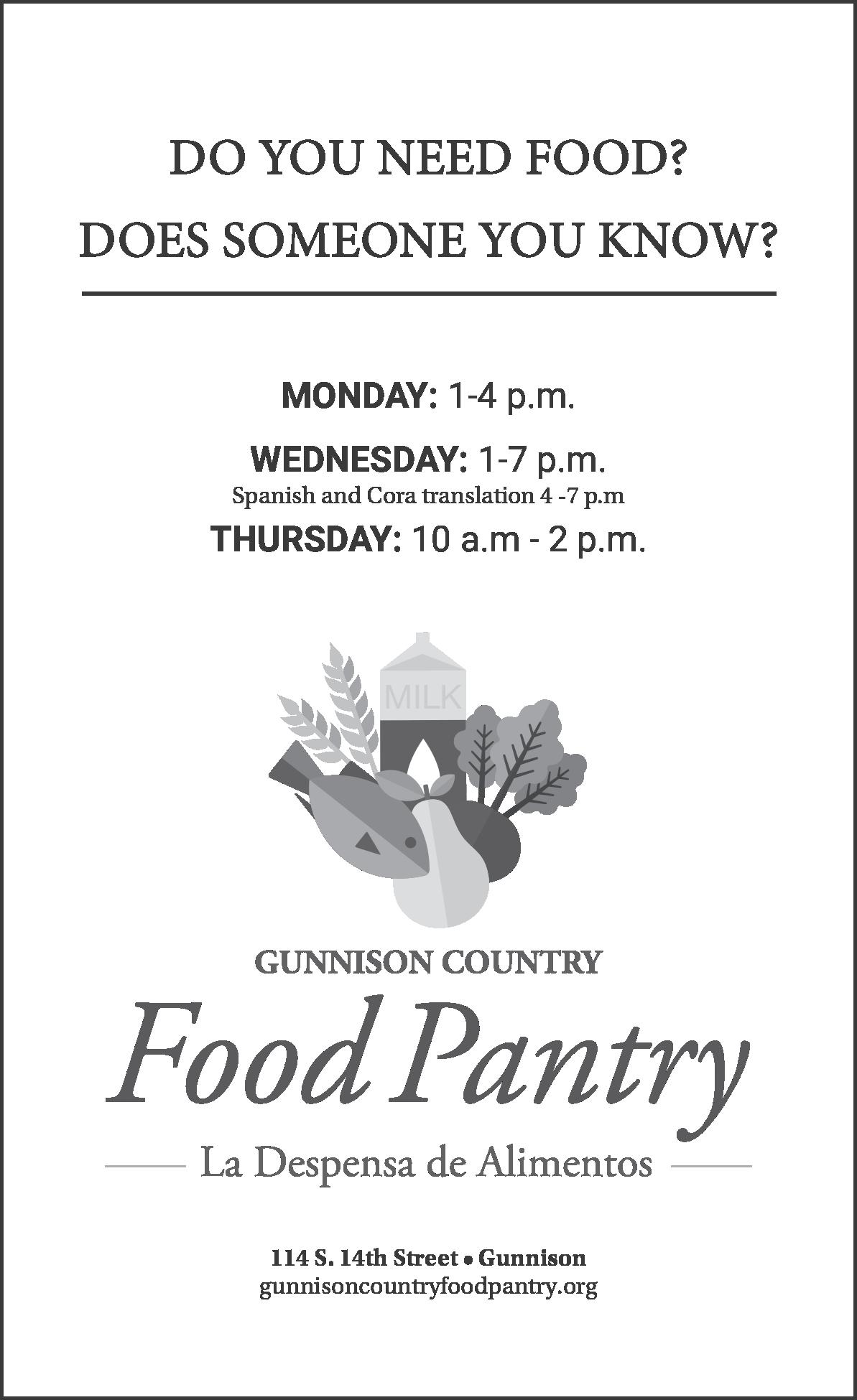





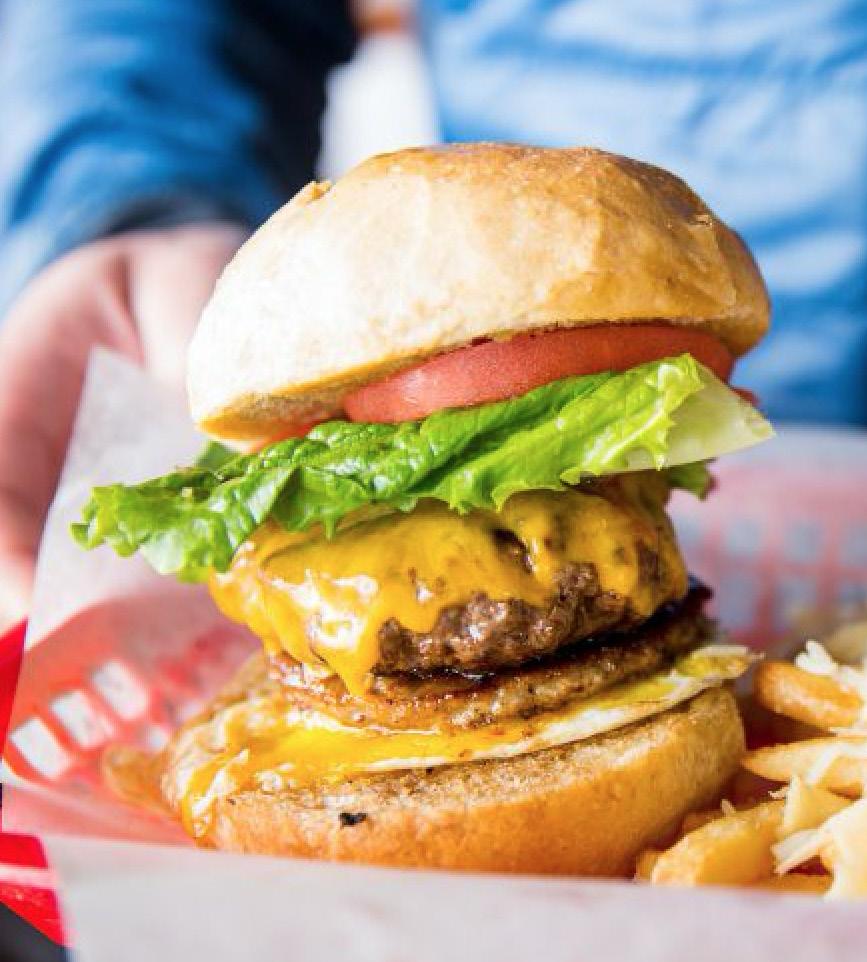
By Perri Pelletier
There’s a new 4-H barn in town! Thanks to a creative community partnership, local youth enrolled in Gunnison County 4-H can now raise livestock even if they don’t have space at home. The newly repurposed green-and-white barn, located just north of Gunnison, is within easy walking or biking distance from downtown — making it a convenient and accessible option for young animal project participants.
The 4-H barn is the result of a collaborative effort between Gunnison County Extension and the Colorado State Forest Service (CSFS). Planning began in late 2023, when the CSFS Gunnison Field Office relocated to a new site just north of town along Highway 135. Foresters Mike Tarantino and Ashley Baer offered the unused barn space to local 4-H youth. Since both CSFS and CSU Extension are affiliated with Colorado State University, the partnership came together quickly and efficiently.
doors, clearing weeds and completing necessary electrical and plumbing repairs. Much of this work was made possible thanks to 4-H volunteer Shawn Williams, SAW Contracting and generous funding from the Nadine Henry 4-H Forever Fund.
This spring, 16-year-old Cooper Imel became
them. While school was in session, her morning visits were brief, but she used her afternoons to bond with the goats. Over the past two months, she’s patiently trained Waylon and Whitley to walk with a harness — a process that requires gentleness and consistency, as young goats aren’t always eager to cooperate.
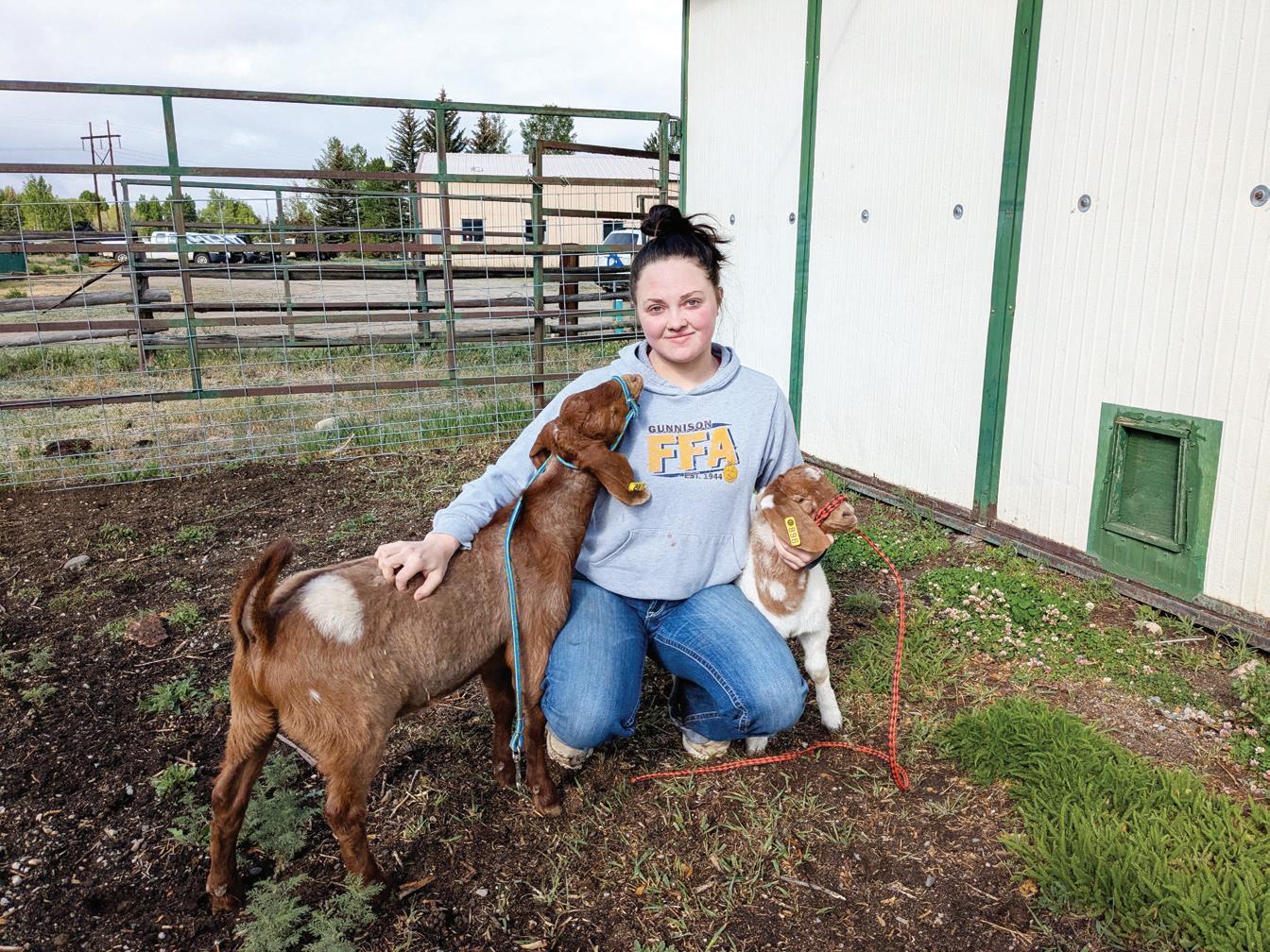
Throughout fall 2024, Gunnison County Extension staff, 4-H volunteers and community members worked hard to prepare the barn for animals. The project involved moving rocks, painting


the first 4-H member to take advantage of this new opportunity. New to 4-H this year, Cooper is raising two goats — Waylon and Whitley. She drives to the barn twice a day to feed and care for
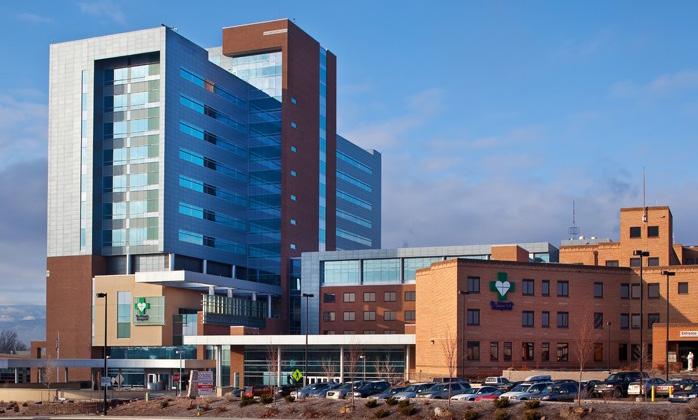

Cooper said she is grateful for the support she’s received from her parents, her sister and her boyfriend, all of whom have helped with chores and offered encouragement during challenging moments. She’s also had guidance from Gunnison County Extension Agriculture Specialist Hannah Cranor-Kersting. She has assisted with everything from feed selection to minor health issues, and even tips for managing a slow-flowing frost-free spigot in the colder months.
A former 4-H member herself, Cranor-Kersting said she is thrilled to see the barn open doors for youth who might not otherwise have the chance to raise livestock.
"I showed in 4-H for 11 years, and it really made me the person I am today,” Cranor-Kersting said. “I am so excited that this barn gives youth who didn't grow up around agriculture a chance to be involved. As our agriculture producer population ages across the country, I think this partnership with the Colorado State Forest Service gives us the opportunity to recruit new producers in our valley."



Now that summer is here, Cooper balances her responsibilities at the barn with a part-time job. She’s learning valuable time-management skills as she cleans stalls, monitors feed intake and ensures both goats get the nutrition and exercise they need. She’s even built a wooden climbing structure with her dad to keep the goats entertained when she’s away. Waylon and Whitley enjoy both their spacious indoor stall and an outdoor run that lets them move freely during the day. Cooper also walks them in a nearby pasture, taking advantage of Gunnison’s beautiful summer days.
“Spending time with the goats helps me unwind after a long day,” Cooper said. “It’s peaceful at the barn.”
Still, she admits it would be nice to share the space with other 4-H youth. She’s encouraged younger club members to consider using the barn and hopes to return next year to raise both
sheep and a steer. CSU Extension staff are eager to welcome Cooper back in 2026 — along with other youth ready to work hard and gain essential life skills through livestock projects.
Youth and families interested in learning more about 4-H are encouraged to visit the Gunnison County Extension Office at the fairgrounds. The 4-H year kicks off each October and culminates in July at the county fair, where members showcase their projects. This year’s fair begins on June 27 with the 4-H horse show. The dog show will be held on Monday, July 7, and livestock shows begin Wednesday, July 9. The public is invited to attend and support these dedicated young people.
(Perri Pelletier is the 4-H youth agent with the Gunnison County CSU Extension.)








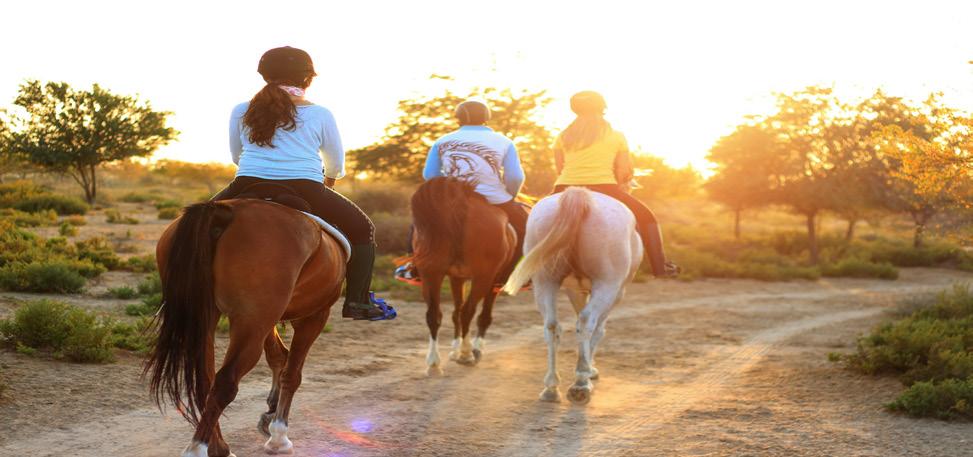




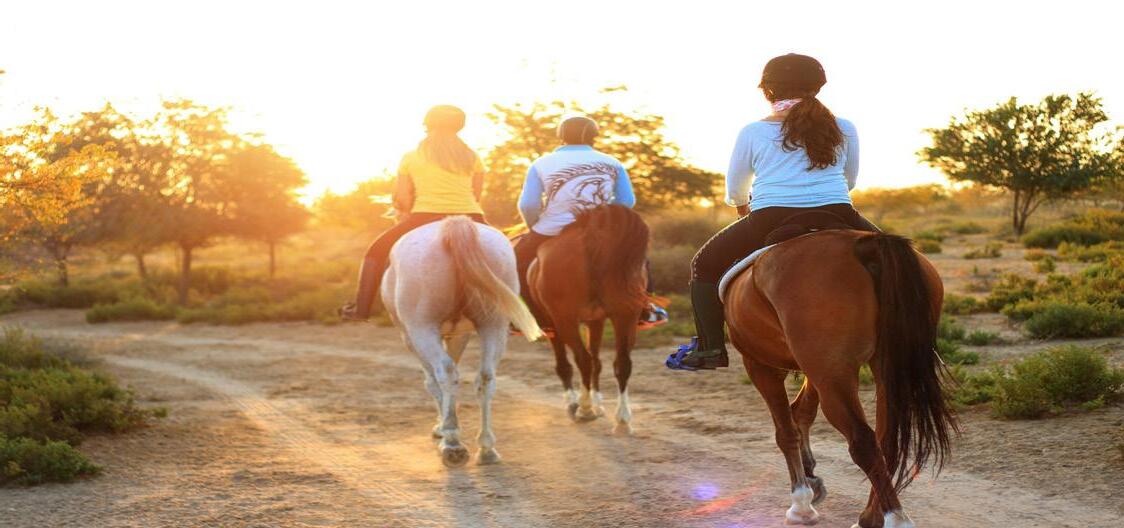








July 2 - 5 to 10 pm
July 3 - 5 to 10 pm
July 4 - 3 to 10:30 pm
July 5 - 3 to 10:30 pm
July 6 - 2 to 9 pm












By Ted Harbin
Brian Patton works in the 21st century of rodeo, but he takes an old-school approach to his trade.
Patton is an entertainer in the most classic sense of the word. He works with animals, but not in a typical way. He will present his showcase during this year’s Cattlemen’s Days PRCA Rodeo, set for Thursday, July 11 through Saturday, July 13 at the Fred Field Western Center in Gunnison.
“My main act is an 1,800-pound American red Brahma bull that’s saddle broken,” Patten said. “He’s trick-trained, so he kneels, bows, lays down and gets on a pedestal. We have a lot of pyro in my act and lots of tricks. We have big props and fire on top of a red Brahma bull.”
It’s more than intriguing. It’s a spectacle, and it happens over three nights in front of the massive crowds that attend the annual rodeo, which is celebrating its 125th year.
“That bull is my dress act, so I’ll be in fancy clothes, white pants, a white hat and fringe shirts,” Patton said. “My comedy acts are original to me for the most part. One of my comedy acts is me using a border collie to herd ducks. We use a lot of animals in my acts.”
That theme has been around rodeo for most of the last century. From trick riders to liberty acts to a well-trained bull, the brand of entertainment opens
the door for all sorts of adventures. Patton, though, also serves as the rodeo’s clown, throwing in tidbits of comedy and also working in the barrel during bull riding.
“I like old-school clowning as far as comedy and joke-telling,” he said. “I like getting into it and really ribbing the announcer. That’s my style, and I like to lean on it and go forward. I’m not much of a hype man or dance man. I grew up watching greats like Rudy Burns and Lecile Harris, so I tend to lean more in that direction.”
Burns and Harris have carried on a longstanding tradition of clowning. Burns is still active, but Harris died five years ago shortly after the final night of the rodeo in Jackson, Mississippi. Like Patton — who hails from Louisiana — Burns and Harris were deeply rooted in the South. Harris was inducted into the ProRodeo Hall of Fame in 2007.
“My dad was a rodeo contestant, so I’ve always been around it a little bit,” Patton said. “I bought a Texas longhorn steer and used it for picture-taking. I used to go to rodeos. People would sit on him, and I’d take their picture. One thing led to another, and I ended up buying another Texas longhorn steer that was really impressive to look at. I started a rodeo act with him, and it’s been all downhill from that point.”
Raised on a farm not far from where he lives now, Patton knows the importance of hard work. The best part of his job, though, is being able to travel the country with his family. His wife and their three children will be with him in Gunnison.
(Ted Harbin is the Cattlemen’s Day media director.)
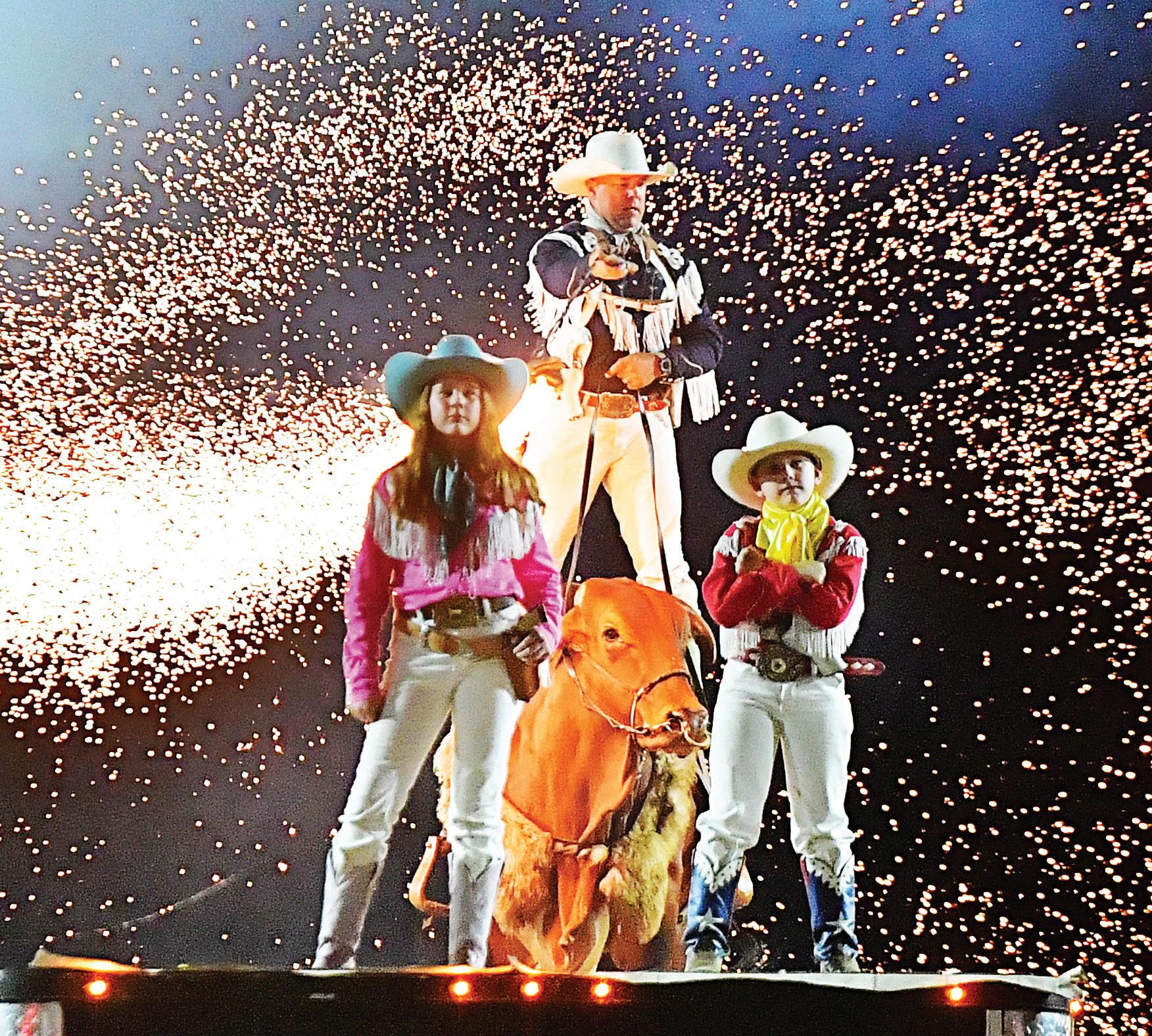
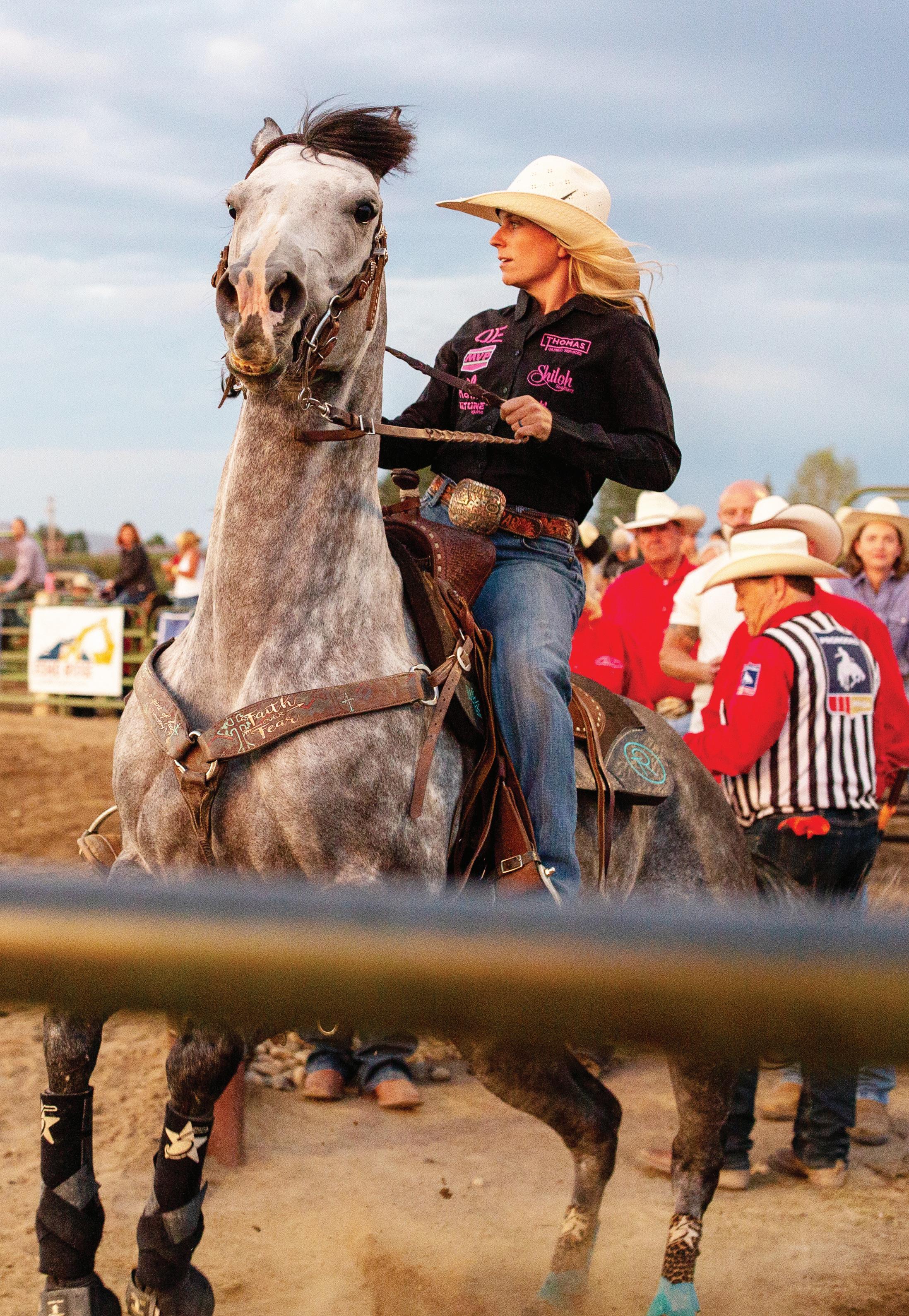


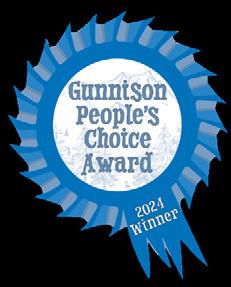





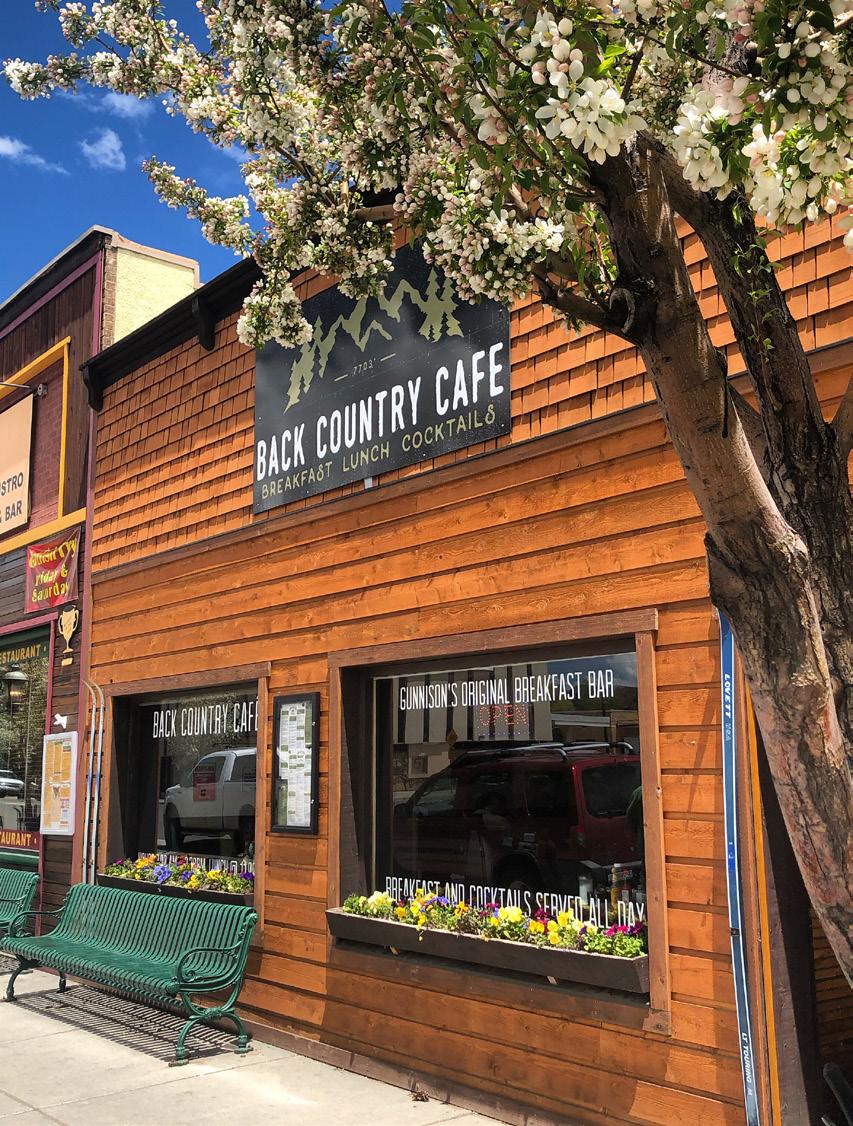


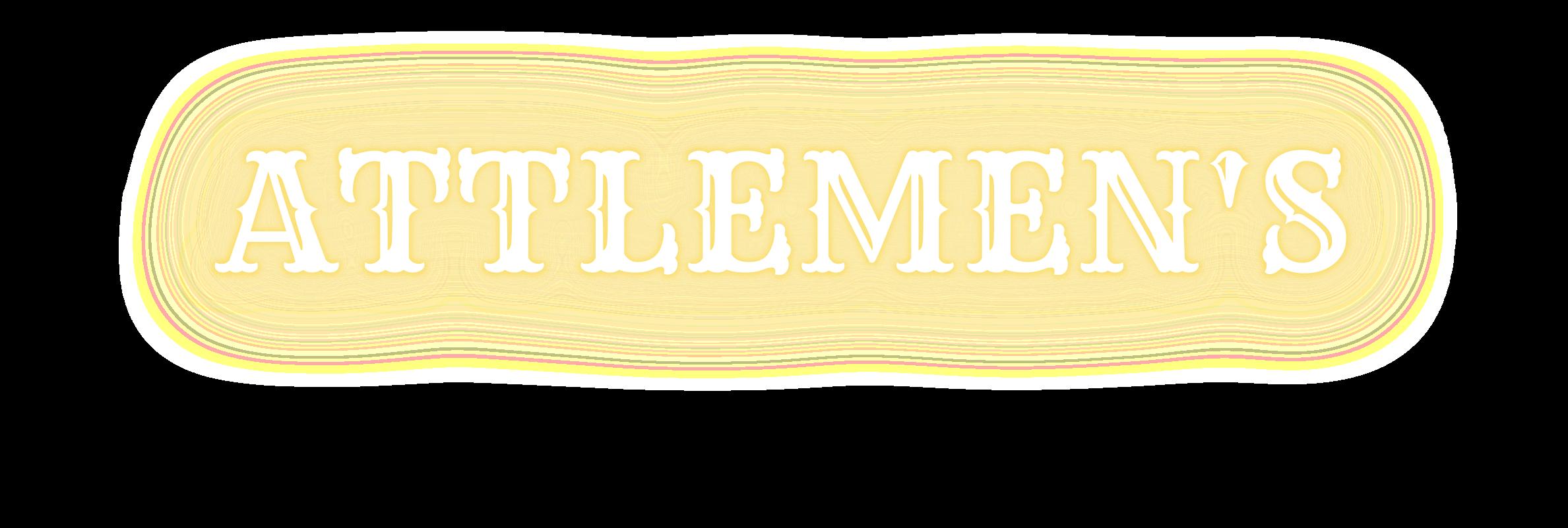


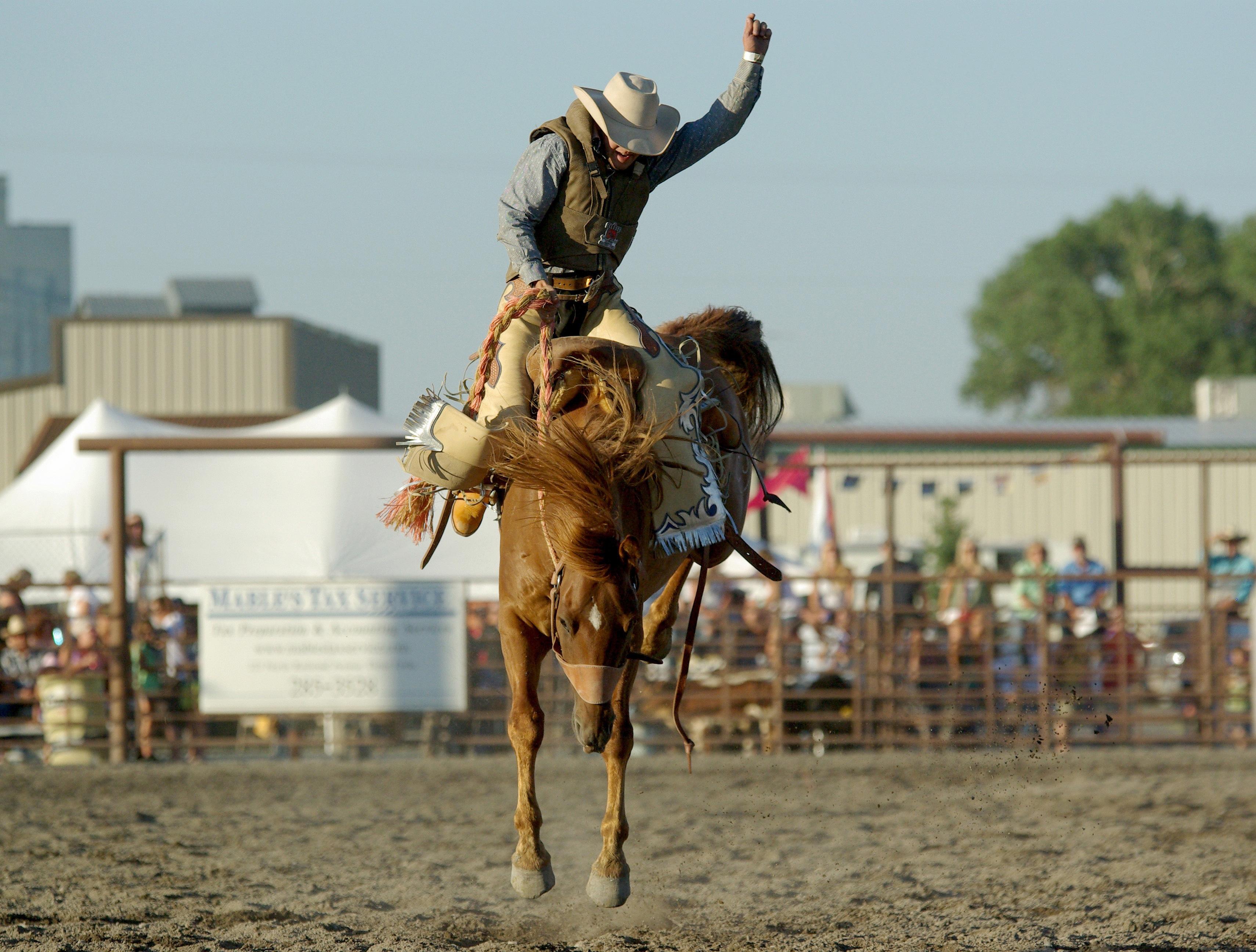


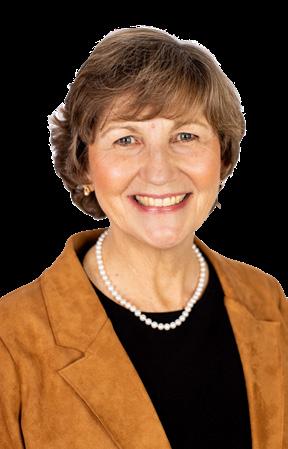

775 Sierra Vista Way, Gunnison $1,450,000 MLS# 825654
1,915 S.F., 3 bed, 2 and ½ bath • fully fenced horse property
Well maintained, on a quiet street with lush lawns, flower beds and mature trees South facing, with abundant sunshine & vaulted ceilings 2-car attached garage • 40’x40’ heated shop/barn Bonus recreational space over the shop

Introducing 4 Roses Ranch! • 4 Bedrooms, 3 Baths • Nestled on Razor Creek
By Tina Haney
It’s exciting to learn to shoot a rifle, shotgun or bow and arrows when young 4-H members first enter the shooting sports program. But how to shoot is not all they learn in this quality program.
The 4-H shooting sports program began in 1980. Currently, there are 300,000 youth across the country that participate. They are led by approximately 18,000 volunteer leaders who dedicate their time and knowledge to help make the 4-H program successful. Shooting sports in Colorado is directed by Colorado State University Extension. Youth enrolled in 4-H may enter the program at age 8 and continue, if they wish, through their entire 4-H career until they are 18.
Youth development is one objective of the shooting sports program, along with learning life skills and of course safety skills. One difference in 4-H shooting sports is that leaders don’t focus on making champion shooters … but rather on making champion kids. Of course, the excitement of possibly shooting at the championship competition during the Colorado State Fair is always there, but it is not the primary focus.
Next, members may choose to make a decorative exhibit item using material from shooting sports supplies. Anything decorative like lamps, shelves or artwork is accepted in this category.
The final choice is to make a standalone exhibit in which the 4-H member constructs an item that can be used constructively with firearms or bows and arrows. Examples might include decoys, targets or quivers. Of the three exhibits, this is the most popular among members. It is exciting to have a project you can use at home or next year in 4-H.
There are strict guidelines to be followed in making these exhibits. Any exhibits not showing safety standards are automatically disqualified. When finished, members bring their completed exhibit to the fair to be judged by volunteers who are knowledgeable in the field. Top exhibits are then selected to participate in the judging at the Colorado State Fair in Pueblo.
Sharing their knowledge doesn’t stop with the exhibits. 4-H members must also complete a record book that includes many different requirements to help youth learn life skills. Those include things such as goals, leadership experiences and community service time that they complete throughout the year. The record book also includes a financial piece — allowing the youth to understand the cost of all their practices and supplies.
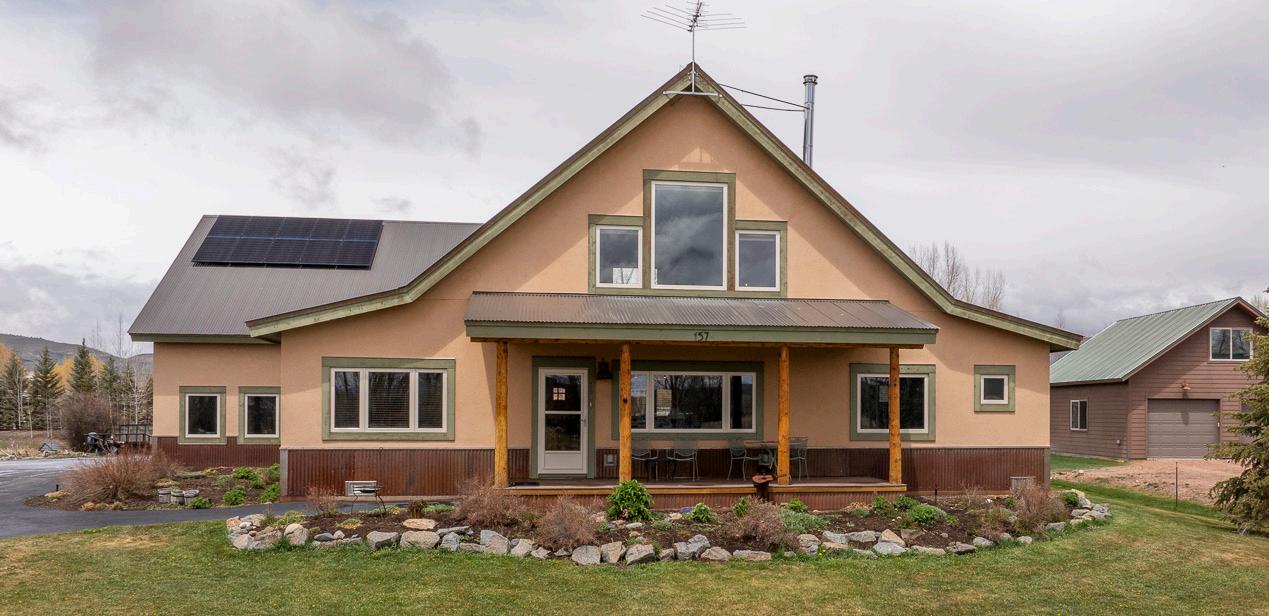
3 Car attached garage w/ oversized doors • Fenced vegetable garden, manicured lawns • Fish Ohio Creek steps from your Home
RANCHETTE ON 6.29 ACRES Are you ready to buy or sell? Contact your local market expert and learn more about what I can do to help you!
• Bordered by BLM on East, South and West • In GMU 551 • Horse arena • 11 acres of fenced pasture • 2 car attached garage • Finished walk-out basement • Wood burning stove & In-floor heat 157 Spring Meadows Trail, Gunnison $1,751,444 MLS# 823776 • 3 bedroom 2 bath custom home • Sleek and stylish gourmet kitchen • In floor heat, low cost utilities • Solar provides 3 days of off grid living


Education is the highest priority followed by recreation, then competition. Members must learn to care for equipment used during shooting practice. Leaders teach the importance of using properly cared-for equipment. Members must exhibit their knowledge of safety through practice, demonstrations and exhibits. Firearm responsibility is also taught during shooting practices. Some participants come to 4-H having never held a firearm or bow and arrow. They go from knowing very little, or nothing, to having the confidence to handle equipment and shoot at targets with comfort. Others with more experience continue to focus on their skills and improve what they already know.
These 4-H members also must do a project to be judged at the fair in July. Members may choose from three exhibit types. The first is a display board in which they illustrate something learned in the discipline they are focusing on. This could be .22 rifle, shotgun or archery. This might be a new skill they learned, or it could be something historical that they learned along the way.

Finally, they include pictures of themselves in action practicing their skills. They must also write a story about their experience over the year. Record books are an important part of the whole 4-H experience. The books provide members with a way to wrap their season up in a positive manner, while gaining skills such as record keeping and writing.
Along with all the excitement of learning to shoot, whether it be a firearm or bow and arrows, 4-H members learn so much more. They walk away having gained important life and safety skills. They learn that 4-H shooting sports goes beyond aiming at a target, but that it takes knowledge, time and patience to become a champion. Anyone interested in participating in the shooting sports program can contact the Gunnison County CSU Extension Office at 970.641.1260.
(Tina Haney is the Gunnison County Extension family and consumer science and 4-H specialist.)
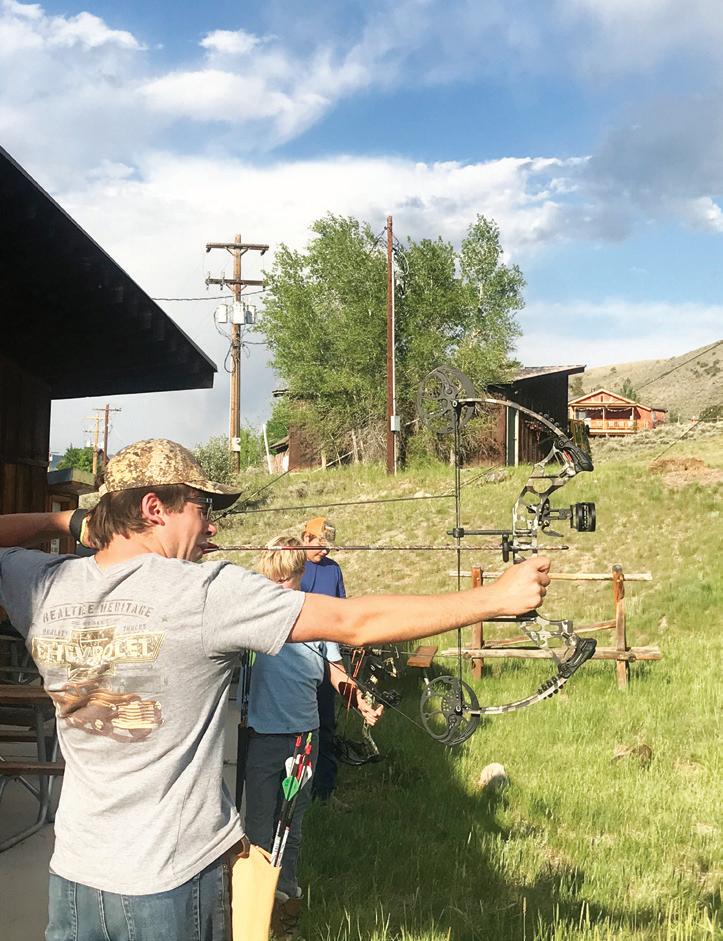
By Ted Harbin
The excitement is building, and the anticipation has spread across the Gunnison Valley.
It’s time for the annual Cattlemen’s Days celebration, and 125 years of history will envelop not only the town but also the region. This is an opportunity for locals to gather together and enjoy each other’s company in the perfect setting. That was the idea when the event was founded in 1900, and it’s the expectation of everyone who has ever called Gunnison County home. Children will arrive with their prized projects, whether they’re lambs, steers, arts and crafts or a handful of other exhibits that will be put on display. Parents and grandparents, aunts and uncles will cherish those shining moments.
Ribbons will be handed out, and champions will be crowned. It’s just part of the Cattlemen’s Days experience, which takes place in early July at the Fred Field Western Center. The highlight, of course, is the annual rodeo, which will feature hundreds of cowboys and cowgirls all battling for big money in the valley.
The rodeo will take place at 7 p.m. July 10-12, produced by Texas-based Stace Smith Pro Rodeos, 11-time PRCA stock contractor of the year.
“I believe everyone in our community is excited about this year’s Cattlemen’s Days,” said Brad Tutor, president of the volunteer committee that organizes the annual shindig. “We’ve got a lot of activities going on, just like we do every year. The big deal for us is that this is our 125th year, so we want to have the best Cattlemen’s Days ever.”
Cattlemen’s Days has long enjoyed a reputation as among the best rodeos in Colorado.
“We’re proud of that, and that’s one
of the reasons why we trust Stace and his crew,” Tutor said. “They put on a fabulous production, and it always fits well with our rodeo and our community.”
Part of that production will include longtime emcee Andy Stewart, who has been nominated for PRCA Announcer of the Year, music director Randy Mayer and entertainer Brian Patton, who not only provides comedy but also has a specialty act in which he rides a saddle- and tricktrained brahma bull.
The key component in all that is to bring quality entertainment to the people of Gunnison. The rodeo has been a highlight of the annual gathering for more than a century, and it will continue to be. It’s the perfect mix of family-friendly fun and world-class competition.
Last year’s Cattlemen’s Days is a perfect example of excellence. The list of top finishers is littered with National Finals Rodeo qualifiers, contestants like 2005 all-around world champion Ryan Jarrett, who shared the tie-down roping victory, and 2014 barrel racing titlist Fallon Taylor, who finished second.
“There are a lot of people from around here who keep up with rodeo, and many of the cowboys they see competing here are the ones they watch all year on TV and see competing at the NFR,” Tutor said.
In addition to putting on a great rodeo, Cattlemen’s Days is committed to helping raise awareness and funding in the fight against pediatric cancer, with a number of Golden Circle Champions in the lineup. Thursday, July 10, performance of the rodeo will now be called “Gold Night” in honor of that cause. The Friday performance will be the popular “Patriot Night,” and Saturday will be “Gunnison Ranchland Conservation Legacy Night.” Each show will be the perfect setting to honor so many in a way befitting their challenges and their service.
“Our goal as a committee is to have the best entertainment possible,” Tutor said. “I think doing things this way gives us that chance this year.”
(Ted Harbin is the Cattlemen’s Day media director.)

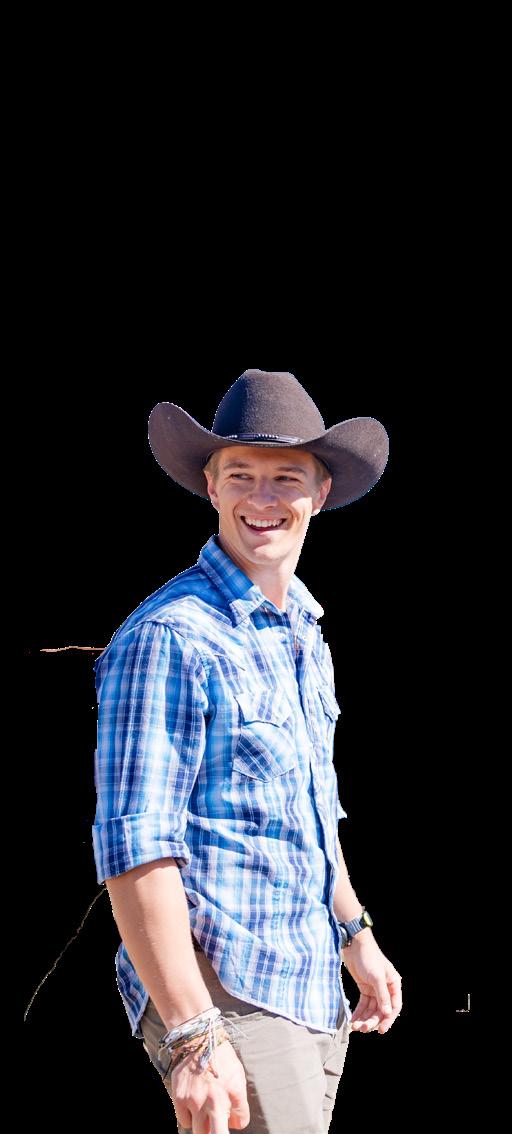













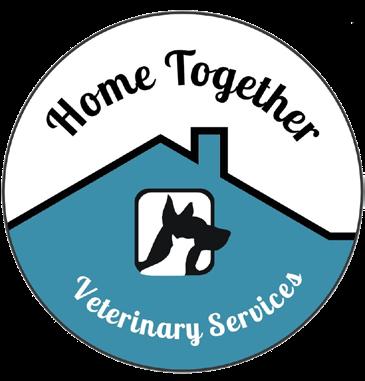

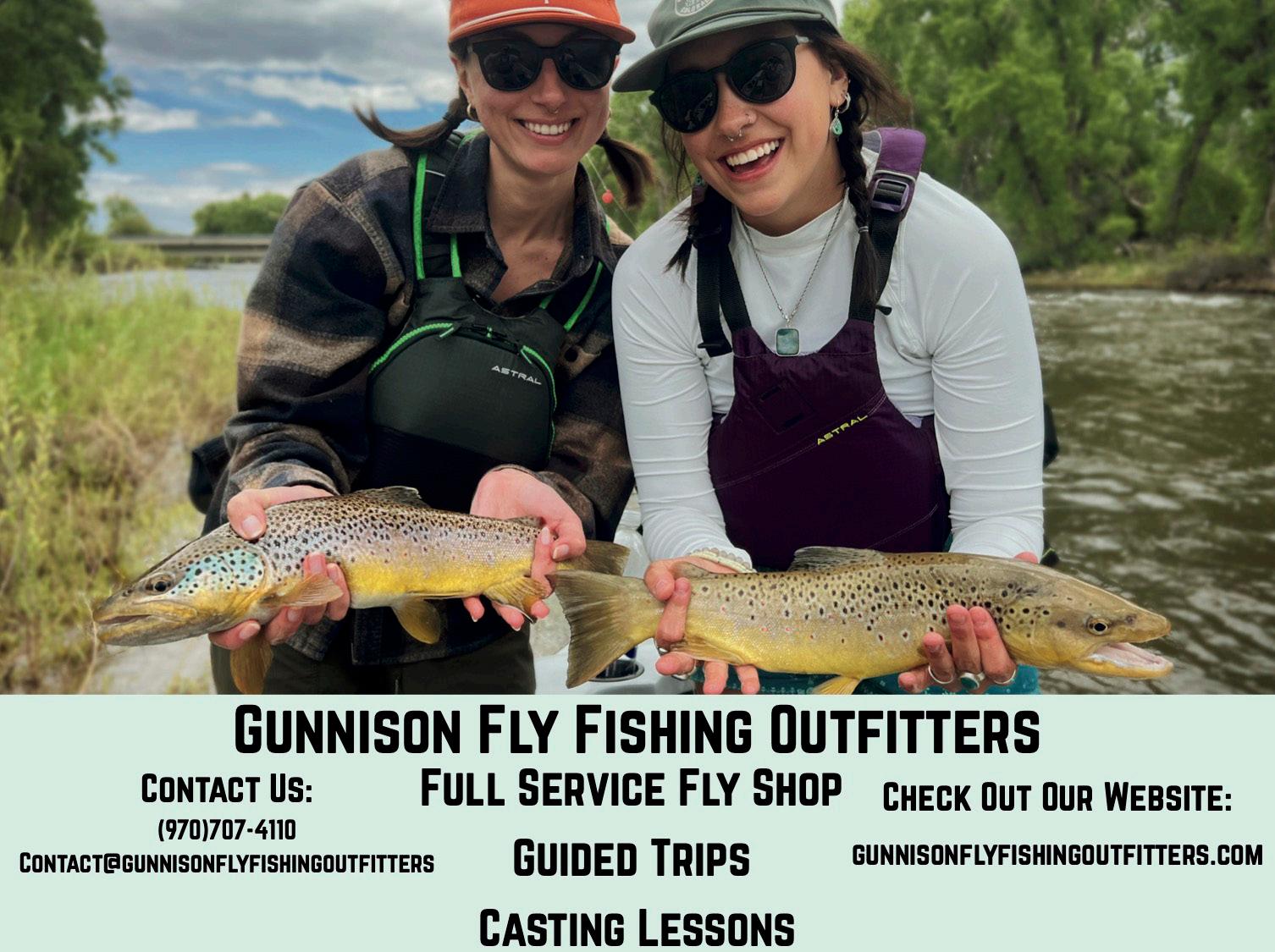
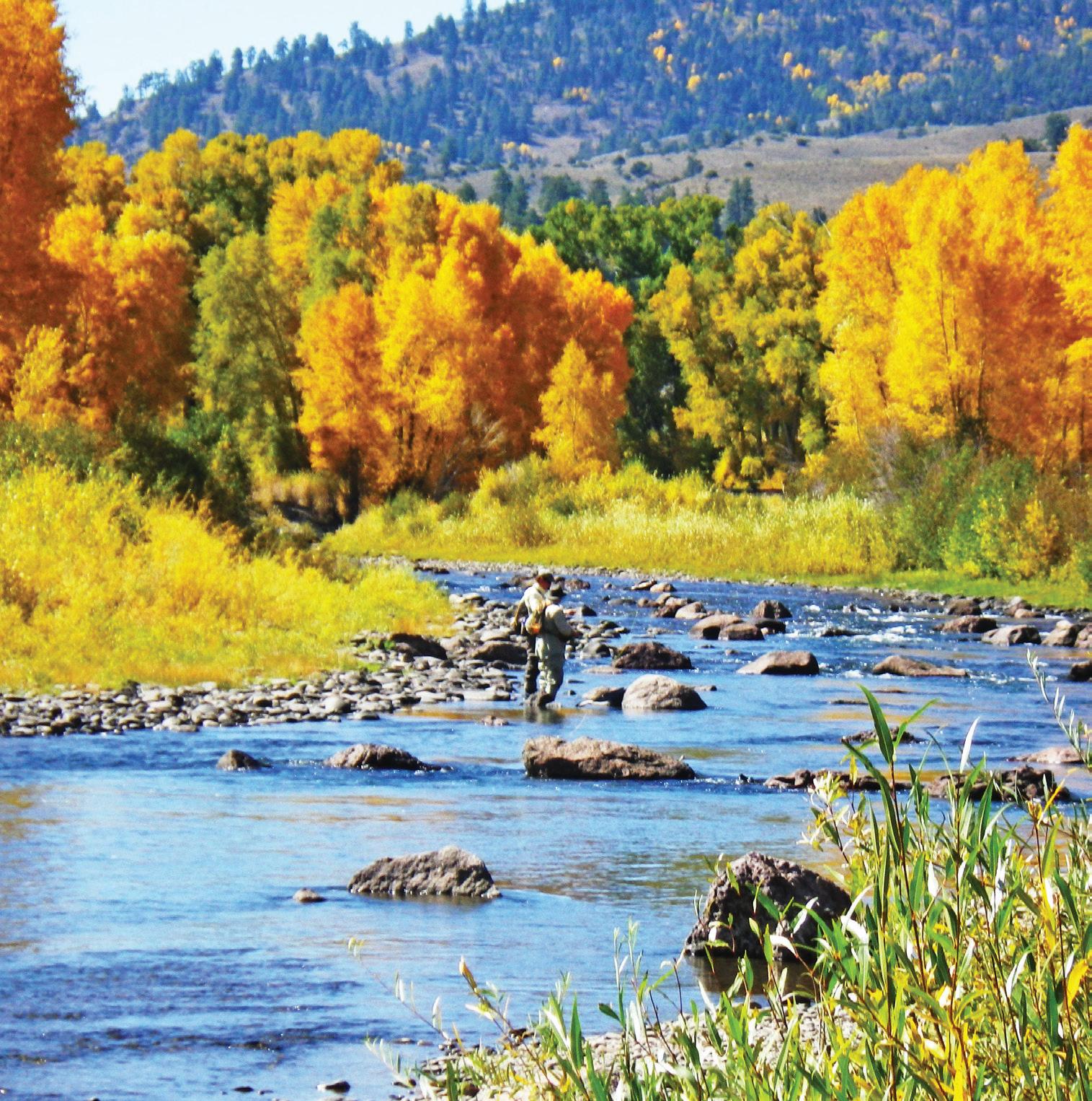
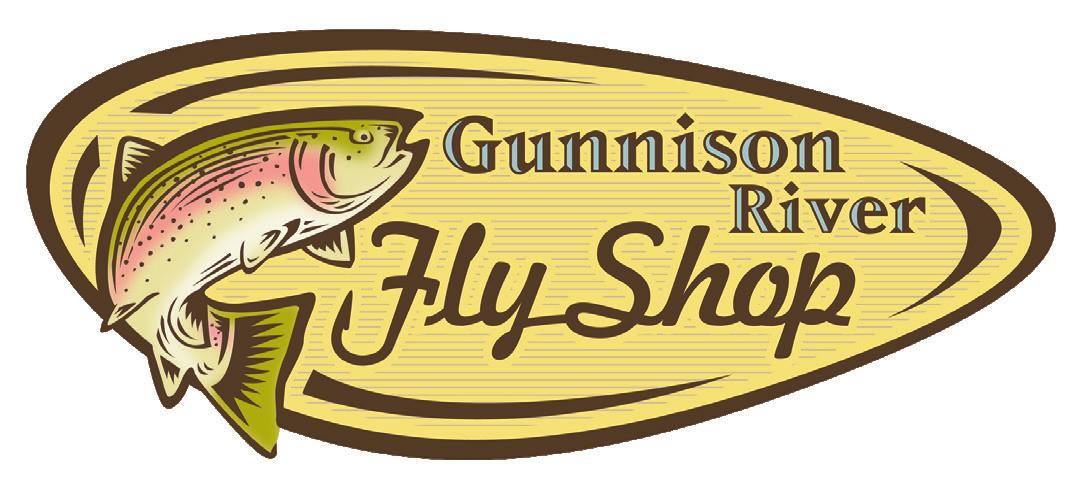
By Hannah Cranor-Kersting
Joseph Schultheis is no stranger to cattle or hard work. A third-generation 4-H member and rancher, Joseph has been immersed in the cattle business his entire life. He maintains his own herd, works alongside his father and grandfather, and competes in local livestock shows — earning top honors such as Reserve Champion Market Beef and Grand Champion Born and Raised Beef just last year.
This year, Joseph is taking on a new challenge that connects tradition with opportunity: raising a Hereford steer through the prestigious National Western Catch-A-Calf (CAC) Program. While his family's ranching roots run deep in Angus cattle, Joseph is excited to welcome a Hereford to the herd — a first for their operation.
The CAC program, which began in 1935, has awarded more than 3,000 head of cattle to youth across the western United States. Each year, forty 4-H members from Colorado, Nebraska, Wyoming and Kansas are selected to participate. At one of the National Western Stock Show rodeos, participants race to catch a calf in the arena. Those who succeed are awarded a steer from Day Cattle Company in Lubbock, Texas, which they will care for and raise over the course of the year. This culminates in a return to Denver next spring to show the animal as a market-ready steer.
Joseph’s connection to the program runs deep, continuing a family legacy of hands-on learning and leadership in agriculture. His father, Joe, participated in the CAC program when he was a young 4-H member. When Joseph had the opportunity to apply, there was no hesitation. He was selected and attended the CAC kickoff event at the National Western Stock Show in January.
The Catch-A-Calf program is more than a show opportunity; it’s a yearlong, real-world introduction to the responsibilities of modern beef production. Participants are judged not just on showmanship, but on the fundamentals of livestock management — record keeping, rate of gain, feed efficiency and carcass quality.
Youth also participate in panel interviews and give industry-related speeches, developing essential skills in

communication, critical thinking and business. All these tasks are extensions of what local 4-H programs teach, and completing the CAC program allows participants to build upon the skills they have been developing.
Local 4-H participants also are offered leadership opportunities, ranging from leading a 4-H club to serving on district and statewide committees in various roles. 4-H also allows for community service and public speaking opportunities as part of their clubs.
“It’s a lot of record keeping,” Joseph said. “But I’ve had some experience with that already through 4-H.”
Participants are supported by sponsors who help purchase the calves and provide ongoing mentorship throughout the year. Joseph’s sponsor, Ron Carpenter from Creede, receives regular letters updating him on Joseph’s progress. Some sponsors even attend county fairs or other shows to support their participants. With over 50 donors involved — from individuals to large agricultural companies — the CAC program is a true community investment in the future of agriculture.
For Joseph, the experience is already paying off.
“I’m most excited to show him,” he said. “I can’t wait to see all my hard work pay off. I’ve learned so much already and am really looking forward to returning to the National Western next year.”
But Joseph’s summer doesn’t stop with the CAC program. He’s also preparing his market beef and swine projects for the upcoming Gunnison County Fair and Jr. Livestock Auction. When he’s not in the barn, he’s helping on the ranch with his grandfather, or working with his dad at the family’s dirt work business. He even runs his own lawn care company in Gunnison.
“I work with my cattle every day,” Joseph said. “I’ve also been watching the new Hereford steer closely for signs of elevation sickness. Coming from Texas to Gunnison is a big change for him.”
Joseph’s determination, work ethic, and passion for livestock make him a shining example of how 4-H and programs like Catch-A-Calf are helping to cultivate the next generation of ranchers. You can catch Joseph and his CAC steer at the Jr. Livestock 4-H and FFA Beef Show on Friday, July 11 at 10:30 a.m. — a testament to the future of agriculture, grounded in tradition and driven by youth.
(Hannah Cranor-Kersting is the director of the Gunnison County CSU Extension.)


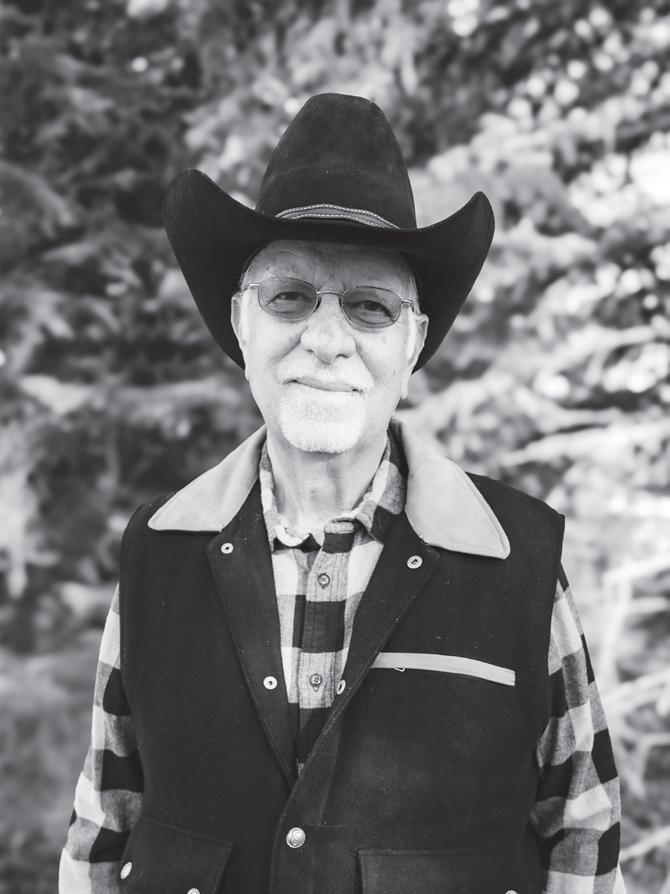
Quick to laugh, John Malensk is a son of the valley. He spent his early years in Crested Butte on his family ranch spanning what is now the bulk of the town of Mt. Crested Butte.
In fact his family sold to the original developers of the ski area in 1959 and bought a small ranch near the Gunnison River. In 1964, his folks and aunt and uncle bought the Walker Dairy to have additional ground. John grew up in that house.
He loved ranch work, especially working side-by-side with his father and uncle Matt. There was a doubt in his mind he was going to take over the ranch despite having a versatile degree from Colorado State University. John worked hard and still does. He
Ron Leonard is no stranger to Cattlemen’s Days. He grew up participating in 4-H, raising and showing steers. Since 1976, Ron has done it all as a committee director, from serving as president in 1998 and 1999, to helping fund raise, gathering information for the brochures, lining out the vendors, running the racing program after the track was built with his father, Cass. He was a former director and president of Cattlemen’s Days, and ran the scoreboard until recently.
Born in Gunnison, Ron has done many jobs around the county, first growing up on a ranch where his father worked. He also spent time on his grandfather’s ranch which was homesteaded nearby in Doyleville. In 1953,
grows quality hay that he sells since he stopped raising cattle.
In the early 1980s, John signed onto the Cattlemen's Days program, which at the time was run by the Gunnison County Stockgrowers’ Association. Early on, he got the assignment of leading the racehorses with the jockeys aboard in front of the grandstand to showcase them for the calcutta. Then he loaded them in the starting gate, a dangerous job.
John took on a larger role with horse racing, then moved from there into the role of committee secretary from 1990-2001. In 2002, the committee created the coordinator position which he was asked to do and held that seat until 2009. The coordinator
his father was hired as the manager of the Eisinore Cattle Co. on the Taylor River near the confluence with Spring Creek. Ron worked sided-by-side with him much of that time.
He was employed by the U.S. Forest Service, worked as a snowcat groomer at the Crested Butte Ski Area and worked for 36 years at the Roaring Judy Fish Hatchery as well as the Pitkin Fish Hatchery. In his free time, Ron spent time woodworking and welding in his shop at home. He is a good hand, as they say.
Working as a director and putting on a rodeo are often a family affair, because that is how ranching works and Cattlemen’s Days is primarily a ranching tradition. Ron’s mother,
plays a vital role because they do a bit of everything to organize committee members and bring the show together. In 1996, John won the Justin Boot Committee Man of the Year award.
John holds the community dear, and it shows in his warm hugs and commitment to Cattlemen's Days, ranching and people. In the meetings he would always come forth with words of wisdom about various aspects of the rodeo presentation that served to guide the committee as well as to coordinate efforts.
What he valued most about the committee was the comradery, friendships and working to help promote ranching.
Anita, was always busy with 4-H, Cattlemen’s Days and running the horse racing booth for 10 years. Both of Ron’s children, Kyla and Ryan, were involved with 4-H projects and shows. Ron is an even-keeled man — gentle and friendly. He is wise in so many ways, rarely having a bad word to say of anyone, a true western gentleman. Hats off to Ron!
Hi, I’m Aspen McNulty, a freshman at Western State University majoring in biology with an emphasis in pre-nursing. I am an active member of 4-H, where I show horses and serve as the president of the Country Clover 4-H Club. I enjoy all Gunnison County has to offer including skiing and the outdoors. I am honored to represent Cattlemen’s Days as the 2025 Gunnison Cattlemen’s Days Queen.

Genevieve Williams
My name is Genevieve Williams. I am 15 years old and a sophomore at Gunnison High School. My passions include showing and raising cattle, working with horses and spending time outdoors. I am proud to be born and raised in the Gunnison Valley and honored to represent Cattlemen’s Days.

Shallbetter rises to professional rodeo stardom
By Alex McCrindle
(Editor’s note: This story was originally published in the March 27, 2025 edition of the Gunnison Country Times.)
Stephanie Shallbetter turned on the television and recited her prayers, one by one, in the same order she has since her son first climbed onto a bucking horse.
She fiddled with a piece of jewelry and watched as her boy, Coleman Shallbet-
ter, mounted a bronco at the San Antonio Stock Show and wrapped his hand into the rope. But sitting there, eyes locked onto the screen, seconds before the horse erupted from the gate, she recalled memories of her son cruising down the Western Colorado University sledding hill, wearing full chaps and spurs nearly 15 years ago.
“Buck off!” he’d yell while throwing himself into the air, pretending to ride a horse down the slope.
Eight seconds later and the cowboy wasn’t playing pretend anymore. Coleman celebrated a 90-point, first-place ride at one of the most prestigious professional rodeos in the nation last month.
This season, the 20-year-old has become a breakout star in the Professional Rodeo
Cowboys Association (PRCA). He is currently leading the permit standings, racking in a total of $45,000 after taking first-place in the San Antonio Stock Show and Rodeo. Now, he’s on track to break records and kickstart his professional career.
Saddle bronc riding is a quintessential rodeo event, synonymous with the American frontier, and Gunnison’s cattlemen heritage. The sport began in the early 19th century, when cowboys broke wild horses, and competed to see who could stay in the saddle the longest. High scores were earned, not by clinging on for dear life, but by riding a thrashing horse with the most elegance and style.
The PRCA scores the event by awarding 50 maximum points to the horse, and 50

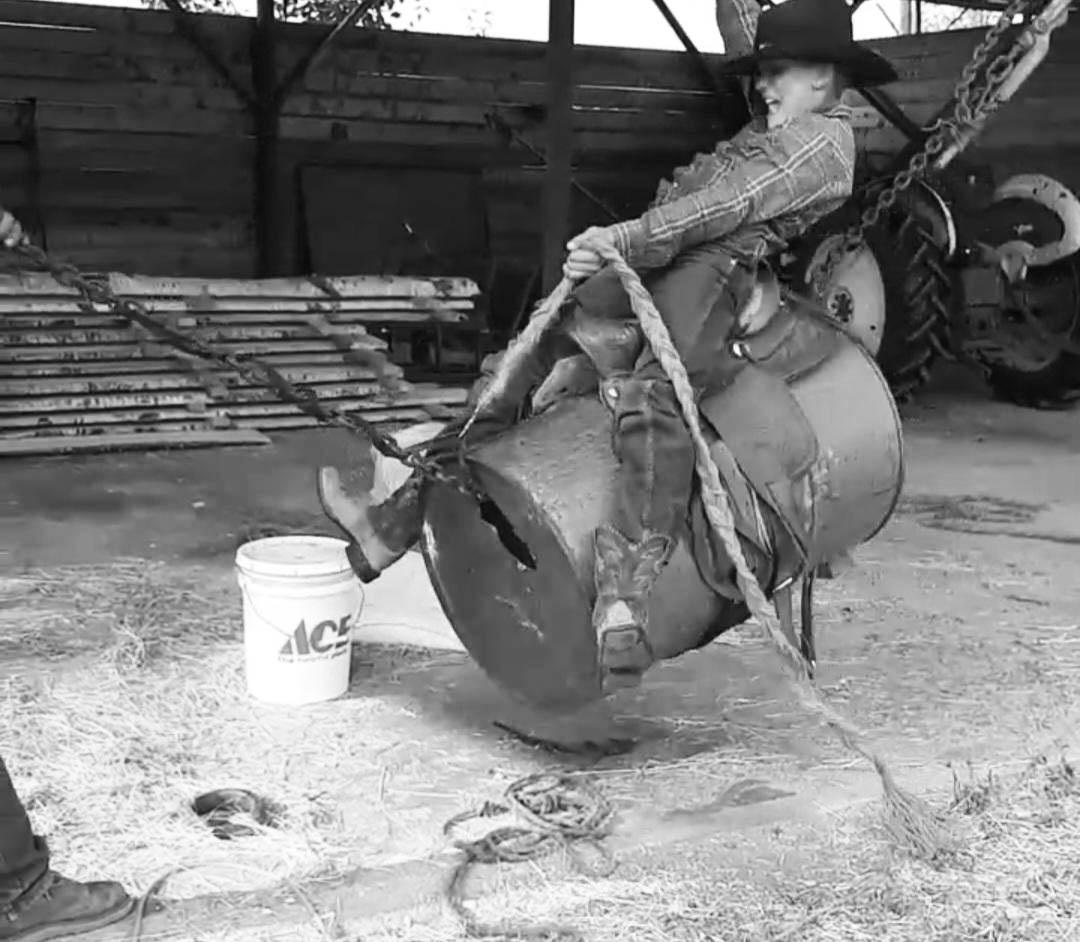
to the rider for a total combined score of 100. Horses earn points for how high they jump, how hard they kick and rapid directional changes. In order to earn a score, the cowboy must stay on for 8 seconds without touching the horse with his free hand.
The rider whips back and forth, using precise footwork, known as spurring, to find rhythm with the animal amidst the chaos. At its best, saddle bronc riding is a dance between expert horseman and powerful beast. But at its worst, an 8-second attempt can end prematurely with a mouthful of mud, and thundering hoofs whizzing past.
The rugged sport seemed to be embedded in Coleman’s genetics. He said he can’t quite remember a singular moment when his dream took root, but a hunger to compete atop a kicking horse has motivated him from his earliest years.
“Saddle bronc riding is more of a cowboy event, you have to be a better horseman and completely in tune with the horse,” Coleman said. “Once you reach a certain ability, you can slow everything down in your mind. They might pull on you and pop your neck, and then you’re in time with the horse, and you can’t hear anything except yourself and the horse.”
Coleman grew up on a ranch, and practically in a saddle, on the outskirts of Gunnison. His father rode broncos in college, and by the age of 4, Coleman joined him branding cattle, breaking horses and riding long days on the ranch. As a child, he would climb high onto the arm of a La-Z-Boy recliner and simulate a bronco’s unpredictable movement.
Despite his parents best efforts to “delay” their boy’s dream of hopping on the back of a bucking horse, Coleman’s persistence proved fruitful at 16 years old when he started competing in high school rodeo. He hasn’t slowed down since.
“We tried to cut deals with him, and told him, ‘No, you’re not getting on this [horse] at 12 years old,’” Stephanie said.
“But, when you have a dream like that, it feels like it’s destiny.”
Although Coleman’s saddle bronc career started later than other riders in professional rodeo, a crucial piece of his master plan fell into place with a sponsorship. Gunnison business owners Brad and Judy Tutor began supporting the aspiring rodeo star in high school. The Tutors’ business, Turquoise Junction and the Gun Room, has been stitched onto his shirts since his early high school days.
“I could hardly stay on a bronc, and the Tutors were always backing me up,” Coleman said. “It’s always awesome to wear their patches, and say that’s where I’m from.”
Straight out of the gates, Coleman looked like a prodigy atop saddle broncs. He lit up high school leaderboards, and began earning top spots on the Mountain West Circuit in 2022. The cowboy scored a first-place 78 at the Colorado Deer Trail Rodeo, and an 87.25 at the State Pro Rodeo Finals in Montrose in 2022. The following year, he purchased his PRCA permit — an amateur status that allowed him to enter specific professional rodeos, and compete for money towards his PRCA membership.
Coleman’s blazing scores caught the attention of collegiate programs, and before long, the Gunnison kid hit the road for the heart of Texas. In 2024, he signed on to ride for Tarleton State University’s nationally-recognized rodeo program in Stephensville.
Although only in his second semester of college, Coleman has balanced academics, collegiate competitions and now PRCA rodeos into his packed schedule. Yet somehow, the Gunnison native continues to raise eyebrows, and has gained a strong reputation as an electric up-andcomer.
“We’re insanely proud of him, and it’s been amazing to watch his skill and talent as a horseman,” Stephanie said. “But our pride comes from how hard he’s worked

for this.”
Coleman opened his professional season with impressive results on the Colorado leg, earning a first-place score of 83.5 in Loveland last October. He achieved qualification for the San Antonio Rodeo with another first-place performance in Uvalde, Texas in November.
The ride of the year came last month in San Antonio. Coleman’s second-choice bronco, named Top Egyptian, burst out of the starting gate and jolted clockwise, catapulting its four hooves high into the air. Coleman compressed backward, but found immediate unison with the animal. His legs whipped from the edge of the saddle all the way to the horse’s mane, and in 8 seconds, Coleman earned the slack-jaw score of 90 points. His performance secured first place in one of the top rodeos in the country, and a check for nearly $13,000.
Now on the edge of $50,000 this season, Coleman is on track to break the saddle bronc record for the most money earned on a permit. He plans to buy his PRCA membership card next year, and compete for a spot at the National Finals Rodeo, and ultimately, a national title as a rookie.
Despite the bright lights and growing fame surrounding the small-town kid, it seems it's his character, more than his skill on a bronco, that has made Gunnison the most proud.
“Coleman is an upstanding young man, with great morals and everything you want in a kid that’s representing your community,” Brad Tutor said. “Yesterday he was watching the big boys, but today he’s playing with them. The kid’s got this unbelievable drive, and he’s absolutely on fire.”
(Alex McCrindle can be contacted at 970.641.1414 or alex@gunnisontimes. com.)

‘A
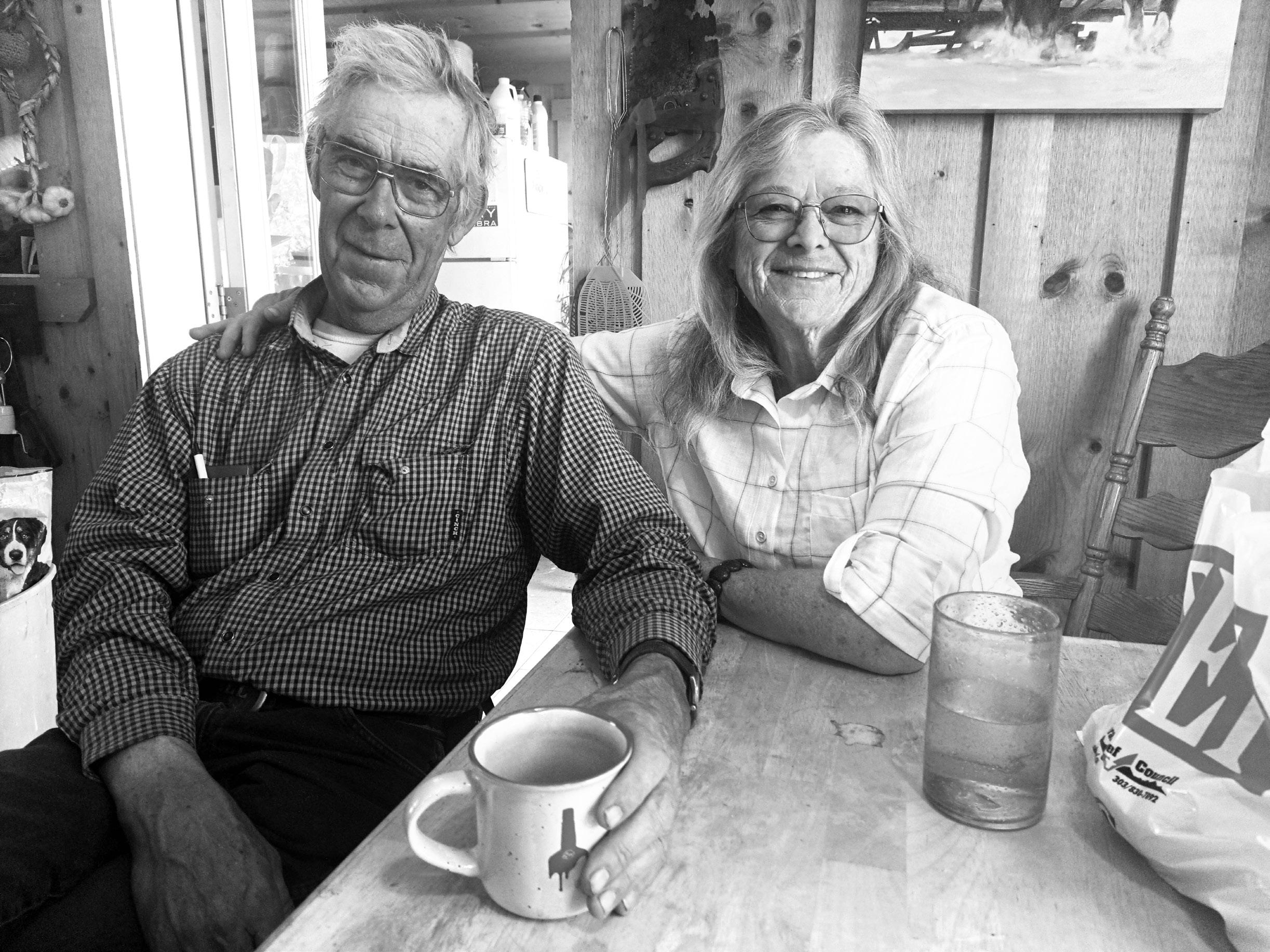
By Dave Pinkerton
“I want to show you something inside,” Bill Redden said as we approached the log house he shares with his wife Sherry. His baritone voice resonated with secrecy.
The Reddens and their son Scott run a 1,000-acre ranch near the confluence of Tomichi and Cochetopa creeks, where Hwy. 114 and Hwy. 50 intersect. After an hourlong conversation at their kitchen table, Bill showed me around. His tour took us through gates, corrals and hay barns, and past a half dozen horse trailers, several ranch trucks and a crane operator off-loading tree-sized logs for reduction to winter firewood. That’s a chore Bill and Sherry do themselves.
Now back at the house, Bill opened the kitchen door, walked to a corner cabinet and took out four coffee mugs to line up proudly on the counter like trophies from a distinguished, yet confidential competition. Each mug had family pictures — grandkids, Scott’s wedding and Scott with his cousin Tyler. I felt like I’d been granted a private showing of their coffee mug memoir.
“I’d rather have them cups than anything,” Bill said. “When people come over for coffee,
I can show them my family. I’m working for these grandkids.”
Our morning together started two hours earlier, around 10 a.m., at the kitchen table. The time since then had helped me begin to understand how four coffee mugs were the organizing symbol of why Bill and Sherry Redden chose ranching over anything else they could have done. When we sat down to talk, Bill had already finished hauling 1,400 gallons of water over several miles to water his cattle, because yet another spring had run dry. Sherry was done gathering three buckets of eggs from her 250 layers. To get things started, I asked about the family history.
The Redden name goes back at least three generations in this valley. Bill’s grandfather owned the ranch that is now the Wilder property just below Harmel’s. Bill’s father rode a horse over to Jack’s Cabin to go to school. His uncle Paul built the Crested Butte ski area and made the path for the gondola.
“Granddad used to supply the horses for Cattlemen’s Days,” Bill said. “They’d take working horses over there and see if they’d buck.”
In the 60s, Bill would take his 4-H pigs to the Cattlemen’s Days auction and load them in the back of a pickup to show them. He remembered how Westside Grocery, now filled with antlers and taxidermy, used to buy the grand prize steer every year. Bill and Sherry reflected on how his dad cooked breakfast for all the carnival people, how the Vaders made hamburgers for lunch and how
the Elk’s Club put on dances that everybody came to.
Ranch life came up, how hard it was and, at the same time, how much they loved it.
“Ranching has four seasons,” Sherry said. “In the spring, you’re calving, getting all your ditches clean from the winter, dragging fields to grind up manure and turning on the water. In the summer, we’re moving cattle, branding or collaring some with GPS and irrigating. Come fall, we’re haying and gathering cattle for market. In winter, we’re feeding every day and sometimes chopping ice to water cattle.”
Bill said he liked not knowing exactly what was going to happen next. Every day on a ranch is different. And even if a rancher thinks he or she is going to do something specific that day, often something else comes up requiring them to shift gears and adapt to the situation.
“It’s like them dried up springs that used to keep water in our stock tanks,” Bill said. “Now we have to haul water. That takes time, pumps and fuel that we didn’t have to plan and pay for before.”
Bill was careful to balance the difficulty with joy. He told me how he rode with Fred Benson recently to gather up a bunch of cattle. Fred, in his eighties, thanked Bill for the help. He leaned back in his chair — the smile of a good memory on his face — and said how he thanked Bill for letting him ride with him because that’s what Bill loves to do — riding and helping neighbors.
“I don’t consider myself a cowboy,” Bill


said. “I’m a cow man, meaning that I take care of my cows the best I can, get them to market, make sure they’re fed every day and raise the hay they need. When I go riding, I’m dressed like this, no chaps, no fancy stuff on my saddle. My stuff looks pretty bad. My horses ain’t very pretty, but they’re usable.”
The conversation turned to present-day challenges that ranchers face.
“The government wants to kick us off BLM and Forest Service land,” she said. “Boulder and the Front Range don’t want cows on public land.”
In a flurry of examples, Bill and Sherry shared their struggles. Sherry recalled a popular political slogan decades ago, “Cattle free in 2003.” Bill worried that Forest Service folks were looking for any little mistake with the grazing rules so their permits could be taken away.
“Without them grazing rights, we’d have to cut our herd in half,” Bill said. “It used to take only 100 head to support a family. But now, with everything going up, it takes 300. How would Scott support his family on half the income? How would we survive?”
Sherry described how the Forest Service makes them take any dead cow off public land and haul them to the dump instead of being reduced naturally by predators. But in certain areas, they can’t use machinery like ATVs to get the carcasses. Yet, road kill elk stay on roadsides long enough to get an orange stripe painted on them, Bill joked. It seemed to me that this kitchen table had been the silent participant to many similar discussions over the years — neighbors, county commissioners and government regulators all gathered around expressing their views and looking for common ground. It is the kind of kitchen table that made me feel welcomed and respected, regardless of my storyline.
Then the subject of the reintroduction of wolves came up.
“It was biology by ballot,” Sherry said. “It






















was crammed down our throats and we had no control over it.”
Bill turned from there to the Gunnison sage-grouse and how regulations for their protection are affecting ranching. He believes that cattle aren’t bad for the birds. The birds actually follow the cows, using the manure for seeds and moisture. Brad Phelps, a fourth-generation Gunnison rancher, guided some people who wanted to see sage grouse, but couldn’t find any, up to a salt lick, Bill said. Sure enough, among the cows were a bunch of sage-grouse.
“They’re not going to tell you that story, because they are trying to get us off the land,” Bill said. “I think they want to help the sage chickens, but they’re going about it the wrong way.”
Bill and Sherry are fearful that corporations will buy up all the small ranches and families like theirs will end up working for those far-away bosses. Yet, Bill still managed to bring the conversation back around to the joy they found in ranching and maybe being able to pass it all along to the family.
“Scott’s boy is all about cows and horses and riding,” Bill said. “There’s nothing I’d rather do than to take him riding with me. If this kind of life goes away, what’s he going to do?”
Which brings us back to a thousand acres, 300 cows and four coffee mugs — all interconnected parts of a private and enduring happiness. Will ranch life, as lived by the Reddens, survive in Gunnison? Or will all their kitchen tables go deaf from silence?
At least for now, the Redden’s kitchen table eavesdrops on a vibrant exchange of secret longings, heartfelt joys and legitimate worries. May it last for generations!
(Dave Pinkerton is a Gunnison-based writer.)



Gunnison Country Folks With Common Sense presents

In this time of renewed Common Sense in America come be inspired, equipped & educated to answer the clarion call to stand for liberty as a Local Patriot wherever you live
Three One Day Events for adults & youth August 5,12,19 Gunnison – Mt. Crested Butte – Almont More Info & To Register: PatriotAcademy.com Click red box: Biblical Citizenship & FIND A CLASS & scroll to FILTERS: Class Type: Biblical Citizenship – Lunch Break Version!
Steve -
After talking with you today and adding the “Homeschoolers” information as a banner on the top, I decided to just send this one version instead of the two that I mentioned before - decided I like the banner about “Homeschoolers” on the top instead of the bottom after all. This one should be the correct length. This should be camera ready. Please advise Fae in advance if any changes are warranted.
Gunnison Country Times 2025 Cattlemen’s Days Edition

Account: Gunnison Country Folks With Common Sense
Contact: Fae Davidson (970) 209-9890

GunnisonCountryCommonSense@msn.com 1/8 page - 5.02” x 3.75” - color

“We’re proud to honor Roger’s legacy by investing in the future of agriculture and education in Gunnison County,” said GB&T Executive Vice-President Chad Zummach.

By Hannah Cranor-Kersting
A new legacy fund honoring longtime community leader Roger Cotten is helping power the future of agricultural education in Gunnison County. Thanks to a generous donation from the Gunnison Bank and Trust Company (GB&T), the Gunnison County CSU Extension Office now has an endowment hosted by the Community Foundation of the Gunnison Valley that will support vital programs for years to come.
The fund, established in memory of Cotten, invites contributions from anyone wishing to support the Gunnison County CSU Extension Office — similar to the well-known Nadine Henry Fund.
Cotten dedicated more than 50 years to GB&T and was a passionate supporter of local ranchers and the 4-H program. A Gunnison High School graduate, he was actively involved in 4-H and FFA, winning numerous awards. In recognition of his lifelong commitment to agriculture and youth development, GB&T created the Roger E. Cotten Legacy Fund (RLF) to honor his values and vision.
The purpose of the RLF is to expand access to, and increase the capacity of, the Gunnison County CSU Extension Office’s programs — particularly those supporting agricultural education in Gunnison County. The fund supports a wide range of programming, including:
• Beginning farmer and rancher education
• Educational opportunities for women, veterans and other underrepresented agricultural producers
• Food preservation and healthy living classes
• Adoption of agricultural technology
• Rural landowner and agribusiness management
• Youth agriculture education
• Agricultural research, including varietal trials, cropping systems, water and irrigation efficiency and livestock management
• Horticulturist training
• Marketing and outreach support for Extension programs
Through these efforts, the fund ensures that adult learners in Extension programs can reach their full potential through continuing education — while equipping producers to pass on sustainable agricultural and business practices to future generations.
One of the first projects supported by the fund is the Gunnison Basin virtual fencing trial, which is already benefiting local producers. Since 2022, the Extension Office has partnered with ranchers to test the VENCE virtual fencing system, a new livestock management tool.
Similar to systems used with dogs, virtual fencing for cattle uses collars that emit sounds and stimuli as animals approach a boundary. Each cow wears a battery-powered collar, individually fitted for comfort and accuracy. These collars communicate with solar-powered base stations, which send data to a web-based platform producers use to manage their herds. When cattle near a designated boundary, the collar emits a sound followed by a stimulus, encouraging the animal to stay within its virtual pasture.
Though the technology is still developing, the trials allow producers to explore whether it suits their operation — without the financial risk of investing in a system up front. Thanks to GB&T’s support, the Extension Office is able to offer these trials at a significantly reduced cost.
In addition to supporting producer trials, the fund has also made it possible for the Extension to invest in future agricultural leaders. For two consecutive years, local seventh-generation rancher Kaden Robbins has served as the program intern. Robbins, who is completing his degree online through Colorado State University, helps teach producers how to use the new technology, gathers feedback from users and interviews land managers about their experiences.
“This internship really changed my career goals,” Robbins said. “Getting this experience working with producers on the ground made it clear to me that I wanted to pursue this line of work for my future.”
Robbins’ contributions have been instrumental in the success of the virtual fencing project. This kind of opportunity — for both interns and producers — is only possible through the support of community partners like GB&T.
And this is only the beginning. From cutting-edge technology trials to expanded educational access, this funding ensures that innovation, community education and agricultural resilience will thrive in the Gunnison Valley for years to come — thanks to the generosity of GB&T.
(Hannah Cranor-Kersting is the director of the Gunnison County CSU Extension.)


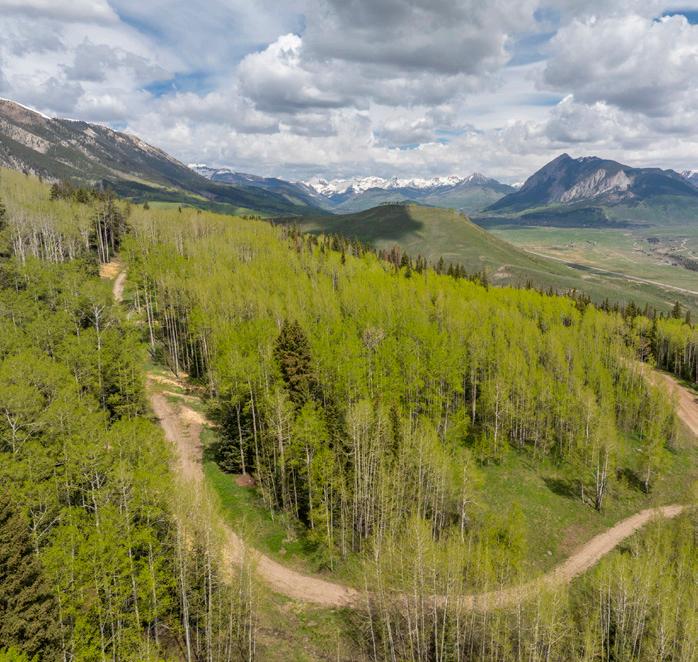



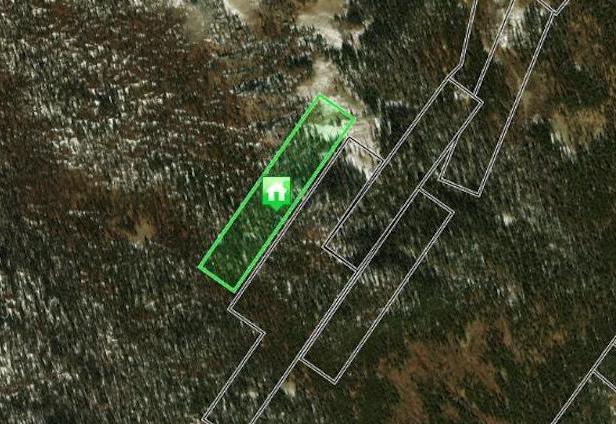
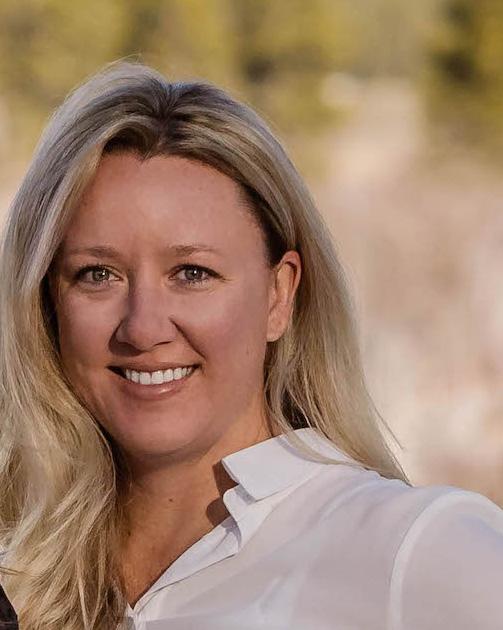

LIKE CATTLEMEN’S DAYS, GUNNISON VALLEY HEALTH HAS A LONG HISTORY IN OUR COMMUNITY.
Gunnison Urgent Care
For treatment of your minor injury or illness that can’t wait for a doctor’s appointment.
Mountain Clinic
The only state licensed emergency center and certified urgent care provider on the mountain. Conveniently located at the base of the Silver Queen lift.
707 N. Iowa Street Gunnison, CO 81230 (970) 648-7105
12 Snowmass Road, Axtel 100 Mt. Crested Butte, CO 81225 (970) 349-0321
Hospital
Our hospital includes a fully-staffed eight bed emergency department which provides emergency care 24 hours a day, 7 days a week.
711 N. Taylor St. Gunnison, CO 81230 (970) 641-1456